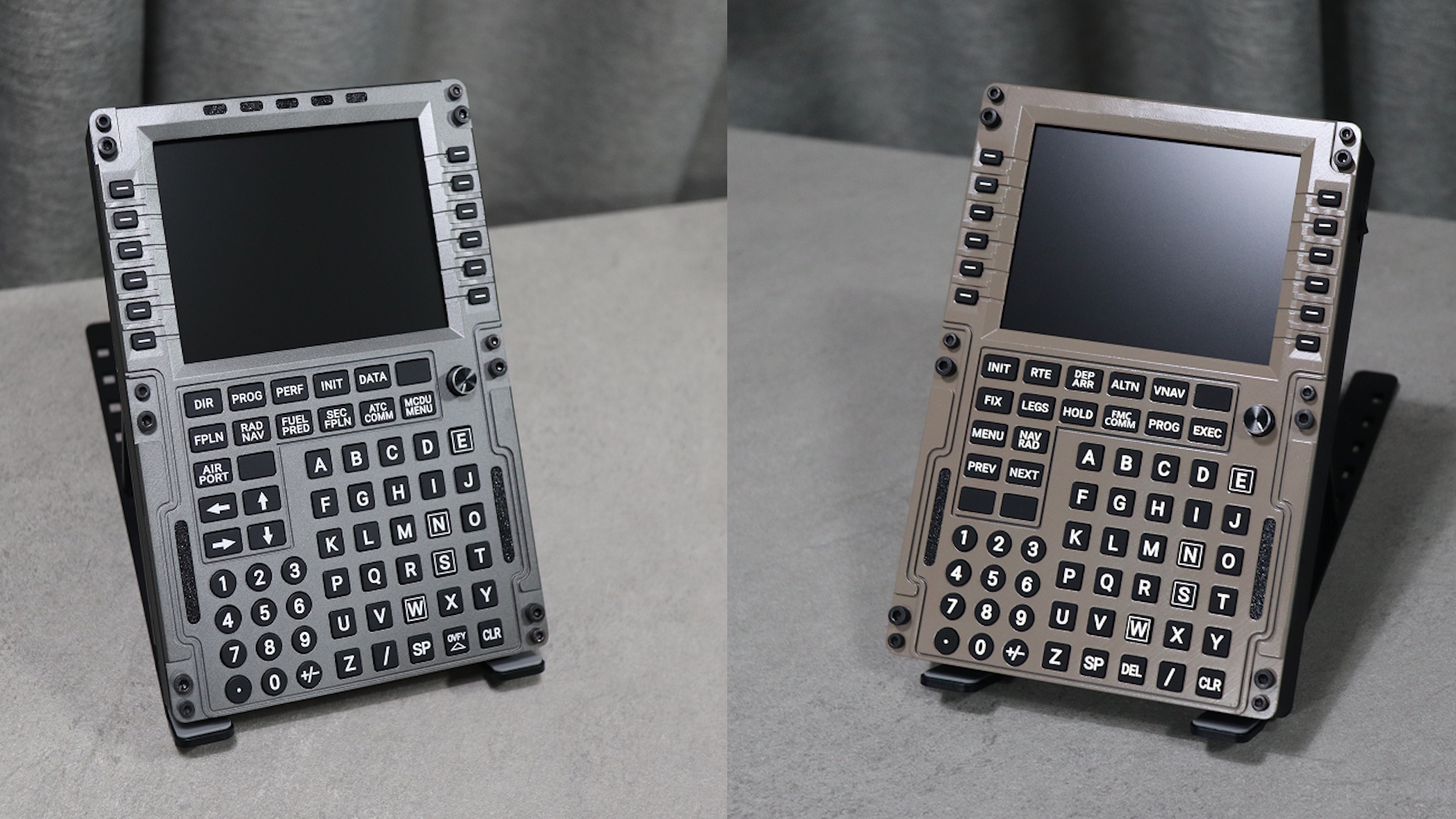Threshold Review: A2A Simulations’ Accu-Sim Comanche 250 for MSFS
July 21, 2023
Introduction
The PA-24 Comanche is a single-engine, low-wing airplane with four seats, designed and built by Piper Aircraft in the mid-50s, with multiple variants produced over its many years in production. A2A's Comanche was the second variant to be released, coming out only one year after the original - 180hp - model.
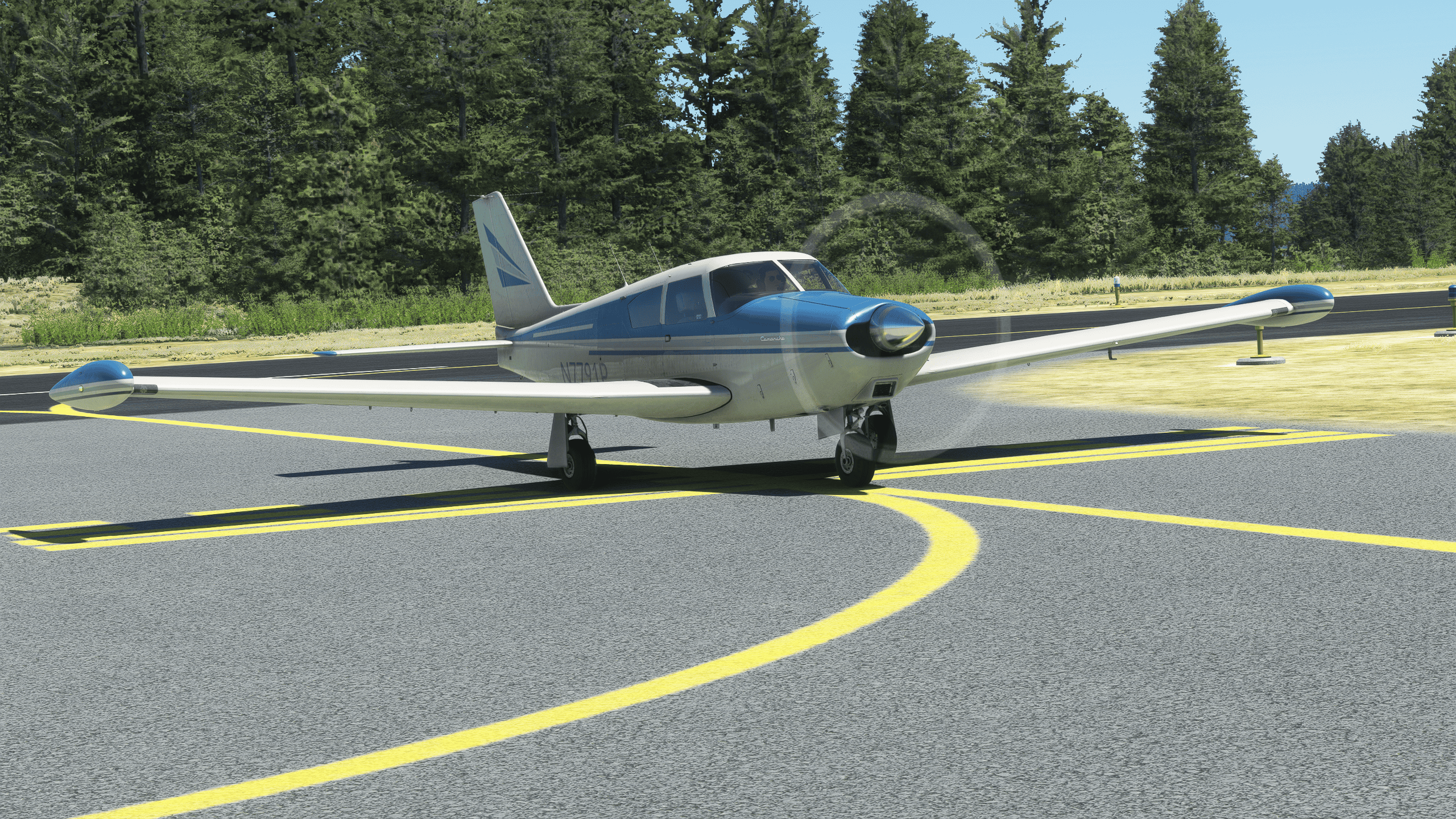
It's powered by a six-cylinder 250 hp Lycoming O-540 engine - popularly used on lots of contemporary aircraft like the Cessna 182 and 206 - allowing a top cruise speed of 160 knots (180 mph) with a varying range depending on the RPM and manifold pressure (from 700 nm to 1100 nm).
It's a workhorse of the skies, widely used by private pilots and flight schools because of its ruggedness and reliability. It is incredibly forgiving and easy to learn, yet hard to master, as one would expect from something powered by a normally aspirated opposed engine.
A2A Simulations based their product on their own Comanche, a 1959 model with manually operated flaps (electrically actuated flaps were only made available from 1962 and beyond), which is arguably faster to operate, and its only downside can't be replicated (as it's manually operated, one needs strong arms to pull the handle). According to aircraft.com data, the airplane was purchased in 2012 and has since been used for research and business travel.
To the unfamiliar, A2A has been developing Flight Simulator add-ons since 2003, back when they were a one-person team, with Scott Gentile (now CEO) as the sole employee, then focusing on the creation of simulation environment enhancements. It was only a short time until they went from that to developing standalone games, starting with Battle of Britain 2, a Windows-based WW2 combat flight simulator.
Then, their distributor at the time requested them to create aircraft for Microsoft Flight Simulator 2004, where they made a line of authentic warbirds that could be flown by the book, featuring realistic performance figures, fuel burn, and flight dynamics.
Accu-Sim, their most popular product line, was released in 2008 with the philosophy that no two flights are ever the same, meaning the aircraft behaves differently every time due to its mechanical nature, which they have been aiming to reproduce ever since accurately. Their Accu-Sim aircraft for FSX and Prepar3d is considered by many as the best General Aviation add-ons ever created.
A new technology powers their Comanche for MSFS - Accu-Sim 2.0 -, built from scratch for the new platform, featuring a new aerodynamics system that accurately models how an airplane flies through the air, providing a level of realism that was never seen before.

The add-on features remarkable performance accuracy based on their own Comanche, realistic handling characteristics and trim feel, a physics-based cylinder simulation of the engine, dynamic ground physics, an advanced turbulence system, subtle wing flex simulation, a realistic fuel system, a custom oil system with dynamic viscosity, an advanced engine starter simulation, a physics-driven sound environment, and loads more.

Distribution & Installation
The add-on is distributed via their digital store, where one can download the executable and install the product with a very intuitive installer. No cd-keys are involved, but the product can only be downloaded up to 10 times.
First Impressions
I have always been a fan of "study level" products, as much as the term is used loosely as of late. A2A, though, has always been among the best add-on development companies in terms of realism and overall fidelity. People have been anxiously waiting for their first Microsoft Flight Simulator product.
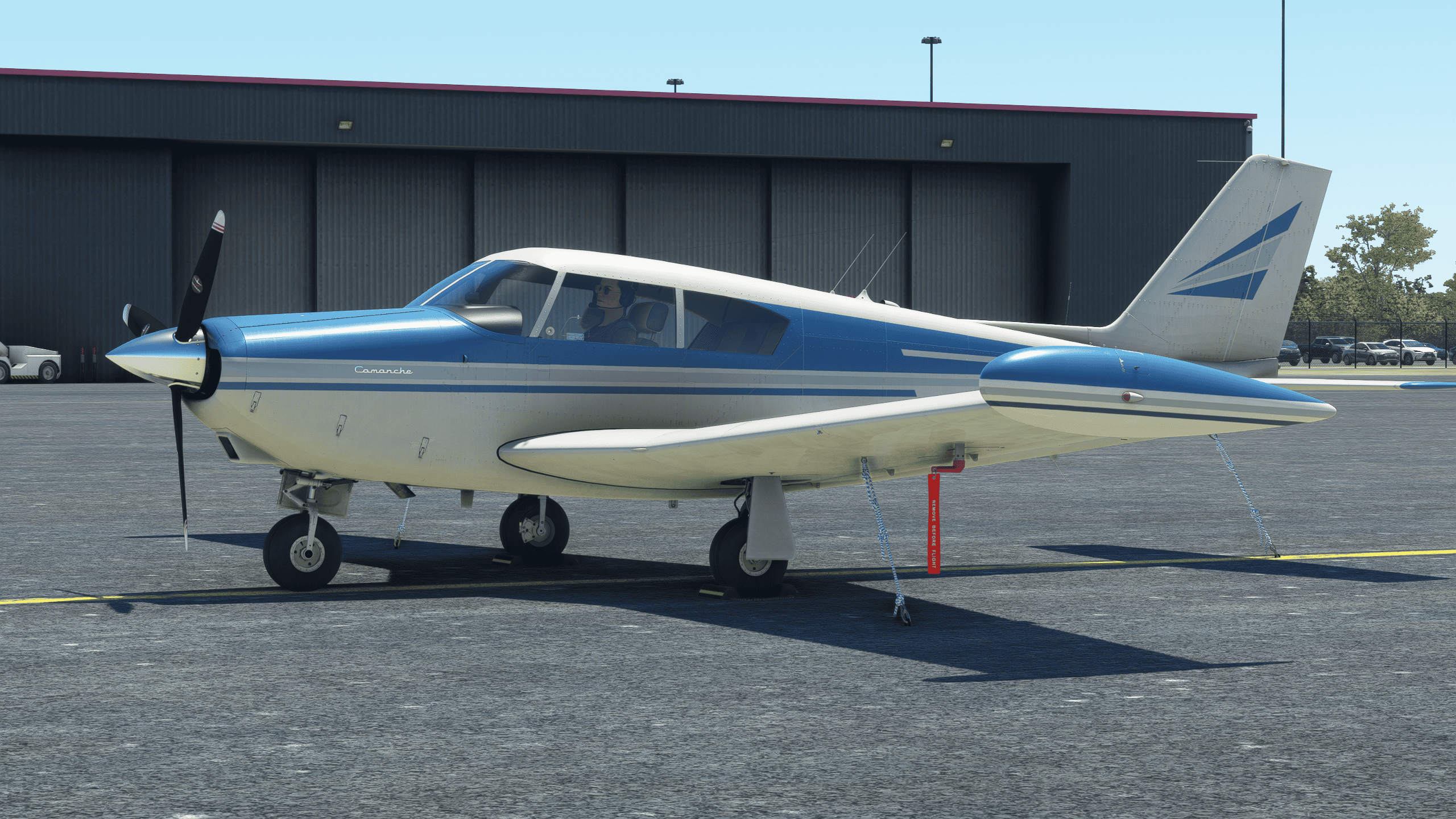
That video they published during FSExpo showcasing the custom engine model with their individually modeled cylinders excited me for what was to come. Microsoft Flight Simulator desperately deserved a General Aviation add-on with this degree of realism.
The sense of ownership provided by Accu-Sim is like nothing else in the market, and you have to take good care of your airplane, almost as you would in real life, or else it might fail on you.
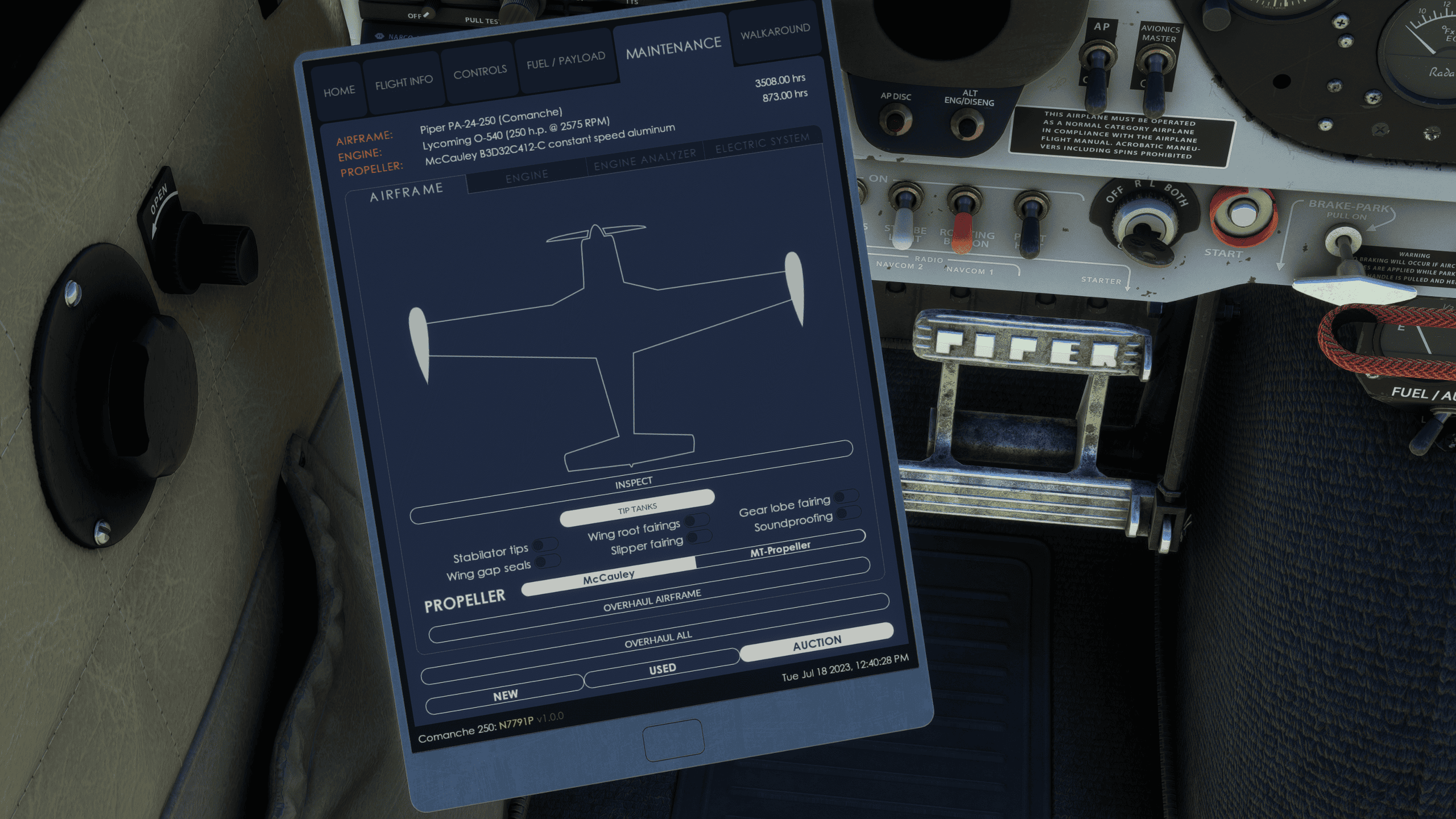
Upon loading in, I felt like a kid on Christmas with a brand-new toy full of possibilities. And what a toy it is! The first thing I did was head straight to the tablet and change the aircraft's condition from brand new to an auction state, which is randomized and will give you a specific number of airframe and engine hours. Mine got over 3000 hours on the airframe and 800 on the engine, which is pretty good for a 60-year-old airframe.

One can also choose a "rental" state that yields an equally old aircraft but is generally better handled. My auction Comanche was in very good condition overall, though, aside from the brakes that were a bit worn out, and I felt like changing them because I was going to fly into short runways at one point.
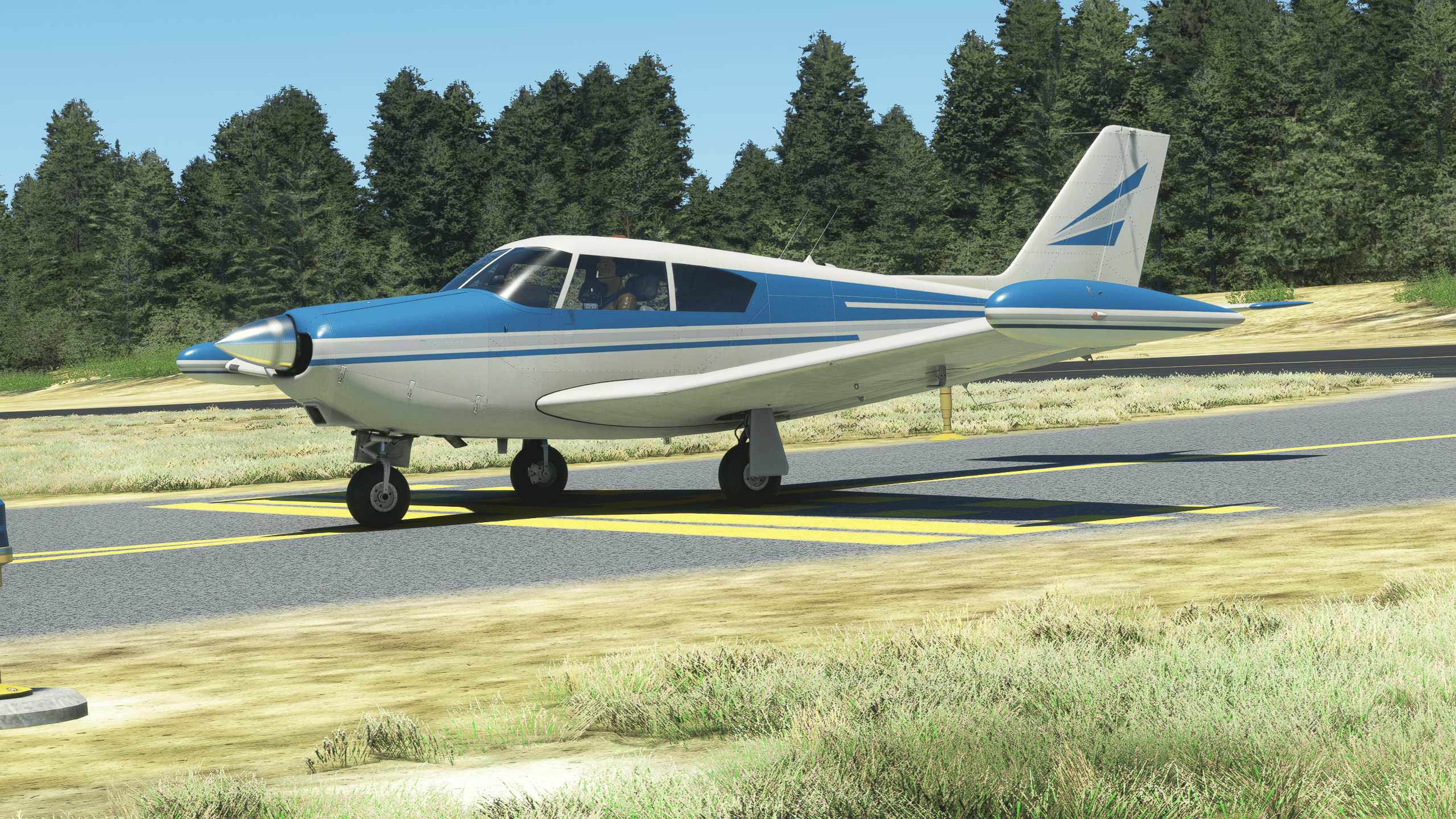
With my airframe all sorted out, it was time to decide on a first leg and plan things out. For some reason, my GNS 430 didn't want to work at first, which I assume might have been because I had just loaded in for the first time, but in hindsight, I might have just accidentally clicked on the Circuit Breaker that powers it (yes, Circuit Breakers are modeled!). Given I had Volanta up on my second monitor, I didn't think much of my - potentially - self-inflicted GPS failure and went on with the first leg regardless.
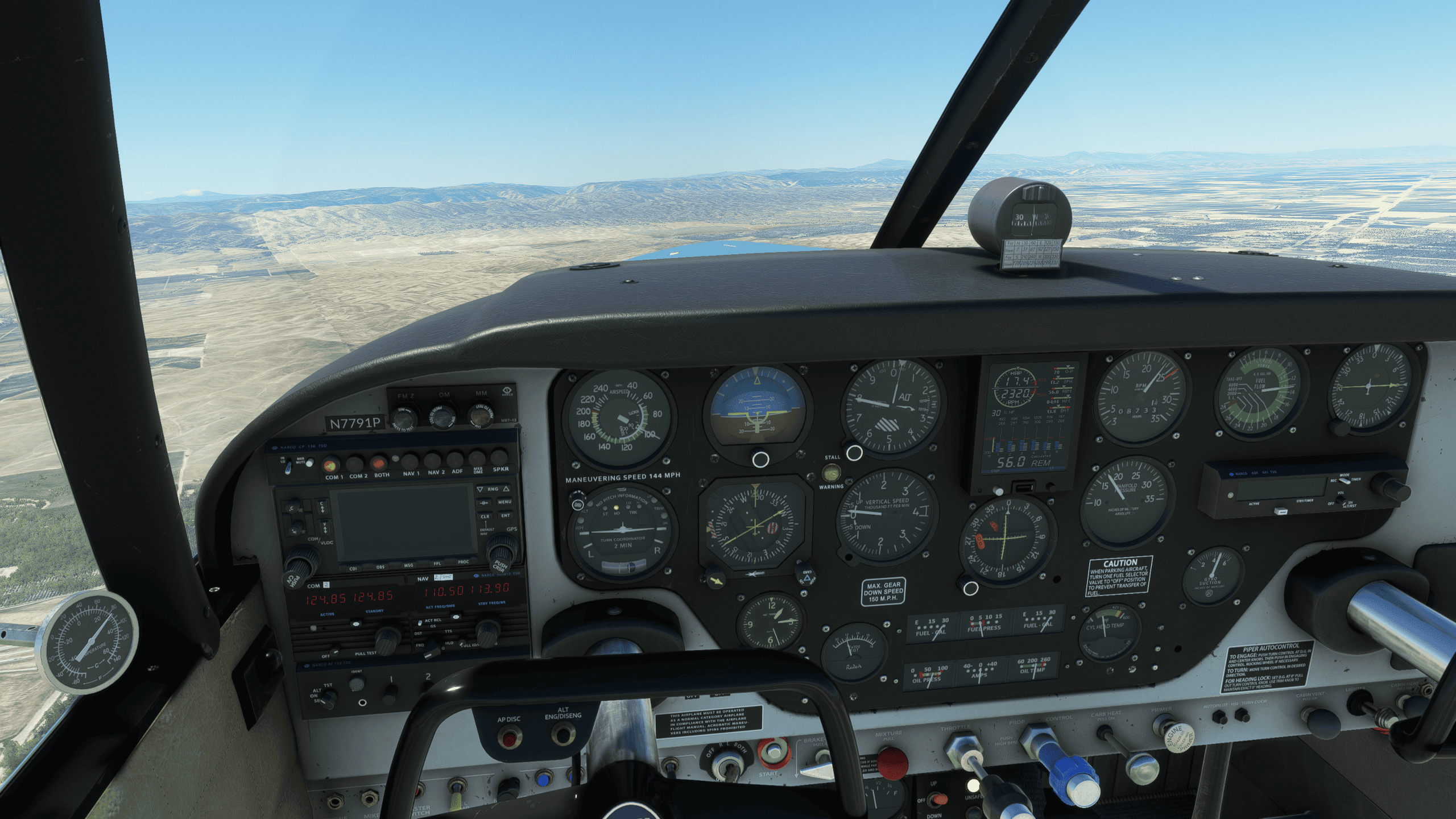
My first flight was a 1-hour something hop from Sacramento International Airport to Ells Field Willits Municipal Airport (KO28). This single-runway general aviation airport felt just right to fly into, with its challenging 914-meter-long runway. Suffices it to say I was initially overwhelmed by the sheer complexity of the airplane, trying my best to get that optimal performance without any guidance and failing miserably. After applying all my leaning witchcraft, I made it cruise at no more than 100 knots, making the flight take much longer than it should have and destroying my ego.
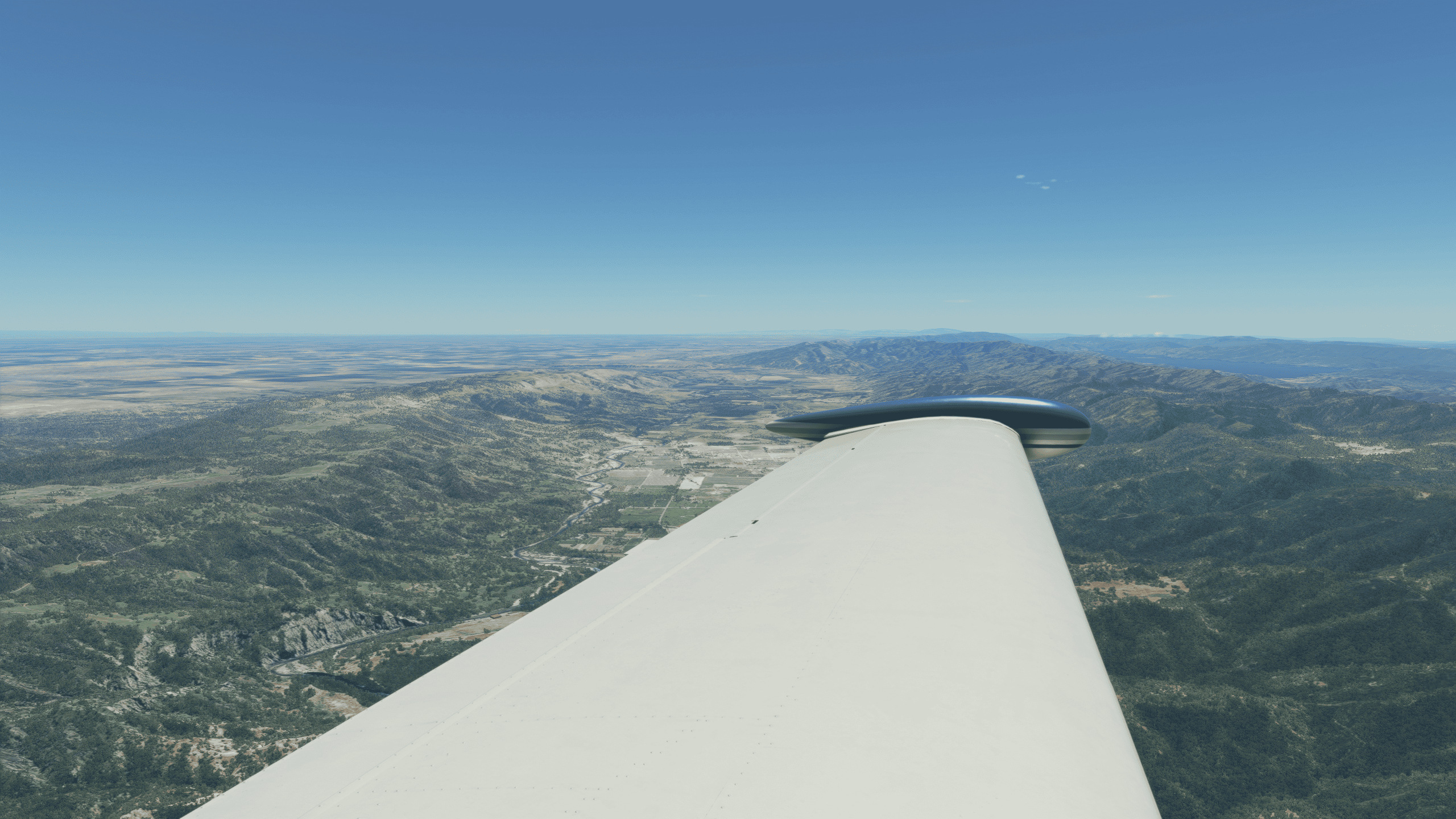
Aviator ego aside, the first flight felt right, something I can't say about most GA airplanes I tried in MSFS. How it flies and reacts to turbulence feels like nothing else, outstandingly. You can adequately feel the aircraft's weight throughout the flight, whether on the ground while taxiing, on the take-off roll, or while cruising toward your destination.

The take-off roll feels super authentic, with the aircraft becoming lighter and lighter as you get faster and then eventually lifting off very glamorously; where it also makes you scared for half a second as the wings become unstable as they get acquainted with the miracle of flight.
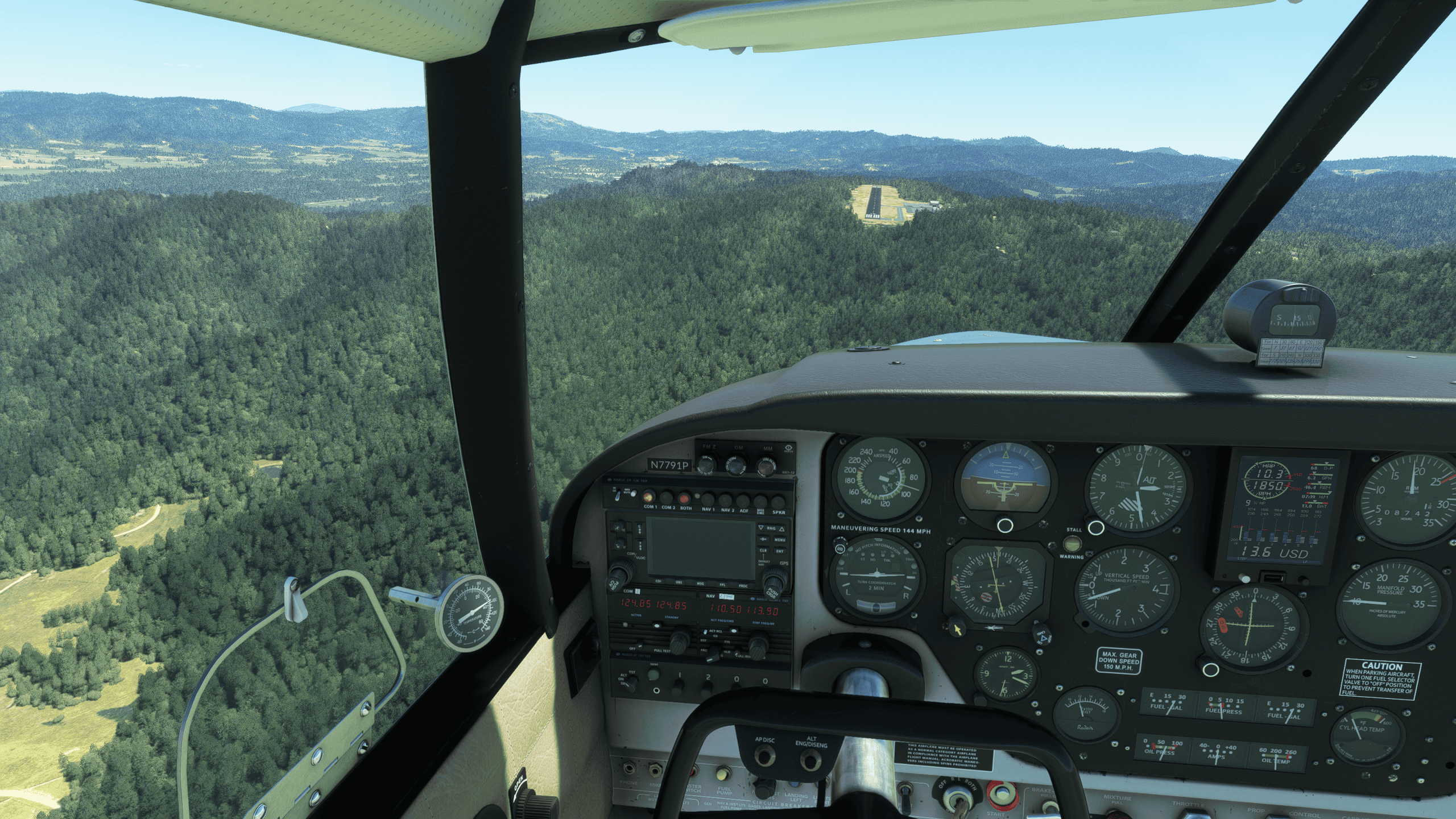
As its real-life counterpart, the flight model is generally very forgiving on approach, as long as you manage the power accurately and respect the speeds listed on the tablet (and user manual). Or the aircraft's actual manual, as it can be flown by the book. The landing behavior is equally solid, and I heard from a couple of real-world pilots that it is, in fact, very accurate.
After making it to my parking stand and getting the chocks and tie-downs on, I had already lost count of how many "wows" were uttered throughout the flight. I felt like writing the review there and then already. Still, I like to be thorough with my reviews, consequently scheduling a couple more legs that took me from California to Colorado relatively unscathed.
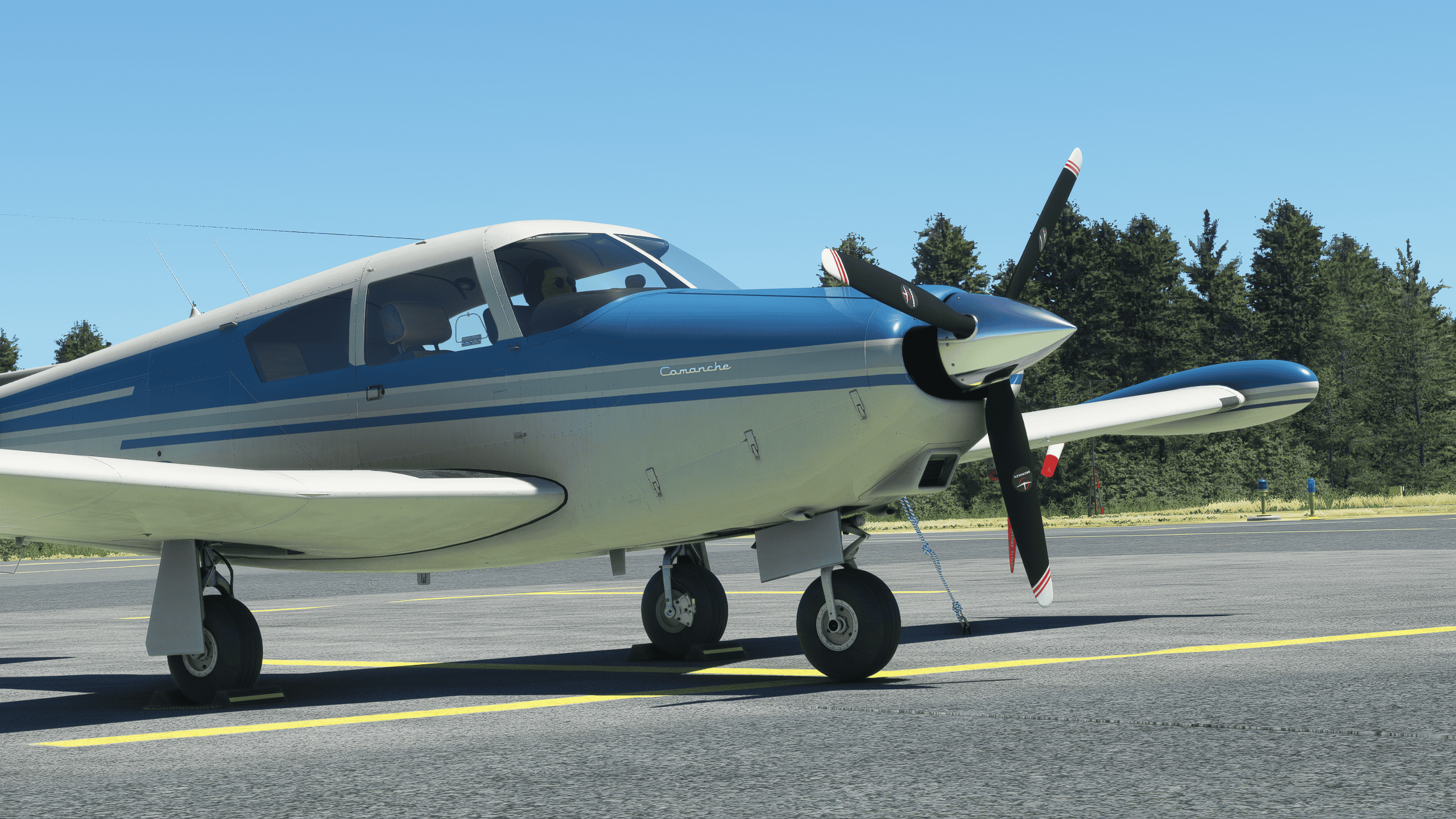
From Willits, I flew to Tracy, near Stockton. The day after, I went down to Agua Dulce, a challenging little airport in LA County, up in the mountains and very tricky to fly into. I was finally taking the Comanche to new heights. From there on, I was hooked.

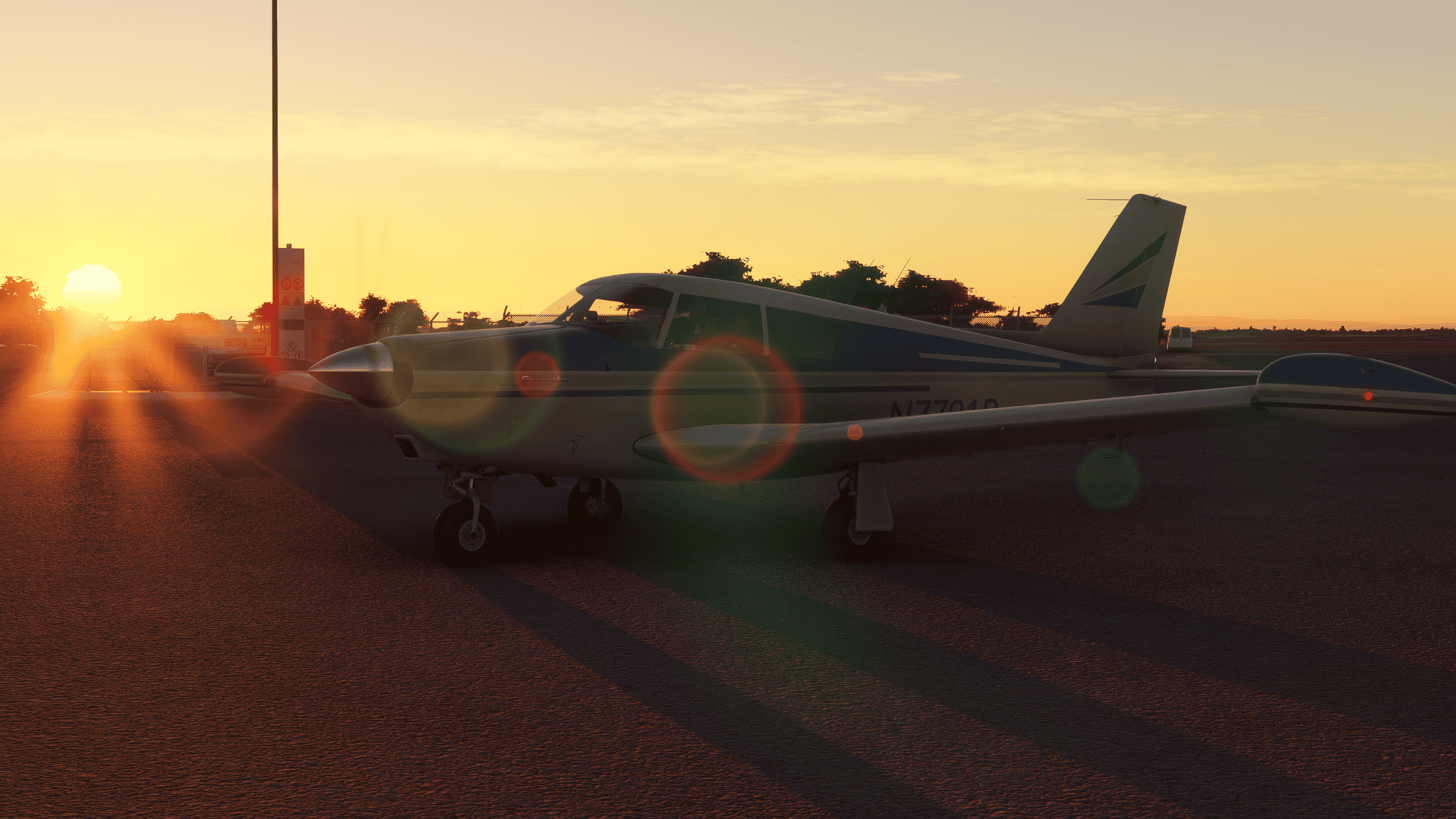

From Agua Dulce, I decided to fly inwards instead of continuing my original plan of flying through California, heading to Kern Valley Airport, a lovely little airport in the Lake Isabella area with a stunning approach. From there, I decided to lower the level and fly into Furnace Creek, the lowest elevation airport in North America, sitting 210 feet under sea level. And what a Furnace it was! Super hot and windy, the strain was enough to partially compromise my oil filter after a couple of touches and goes to get better at landing the airplane.

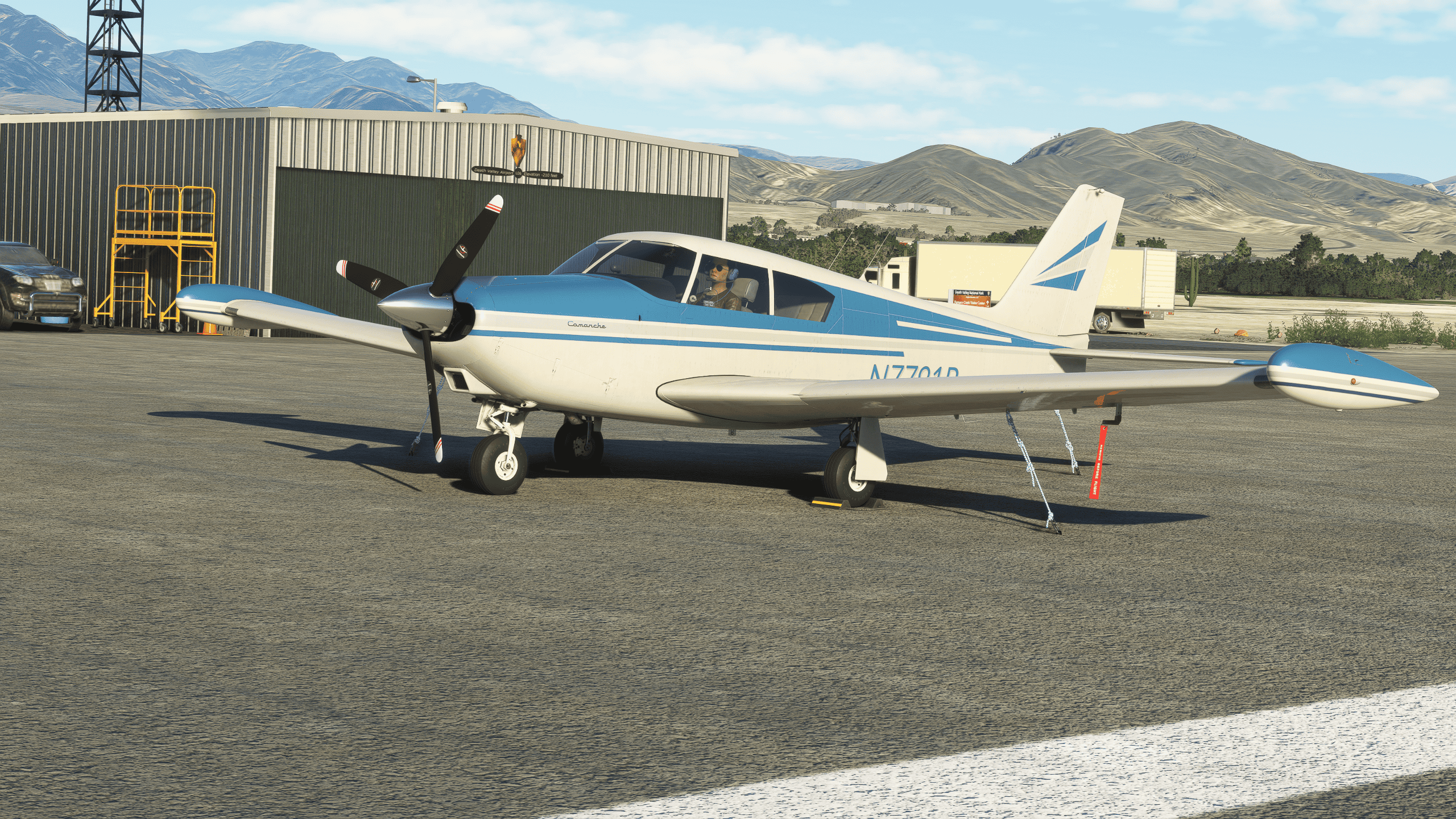
Then, with my confidence partially regained after so many landings, it was time to fly again toward Grand Canyon National Airport, a stunning destination near Flagstaff. It was one of the longest legs, perhaps the most scenic of them until then, taking me over the Nevadan desert and Las Vegas, where I had to resist my primal gambling urges.

After a hot coffee and many screenshots, it was time to continue toward Stevens Field in Pagosa Springs. What a lovely little airport it was! The same could be said about the surroundings. Very stunning! The airframe was soldiering on rather nicely despite its 3 thousand hours and consistent scientific abuse (I was running the engine above the recommended 2400 rpm to see what would happen).
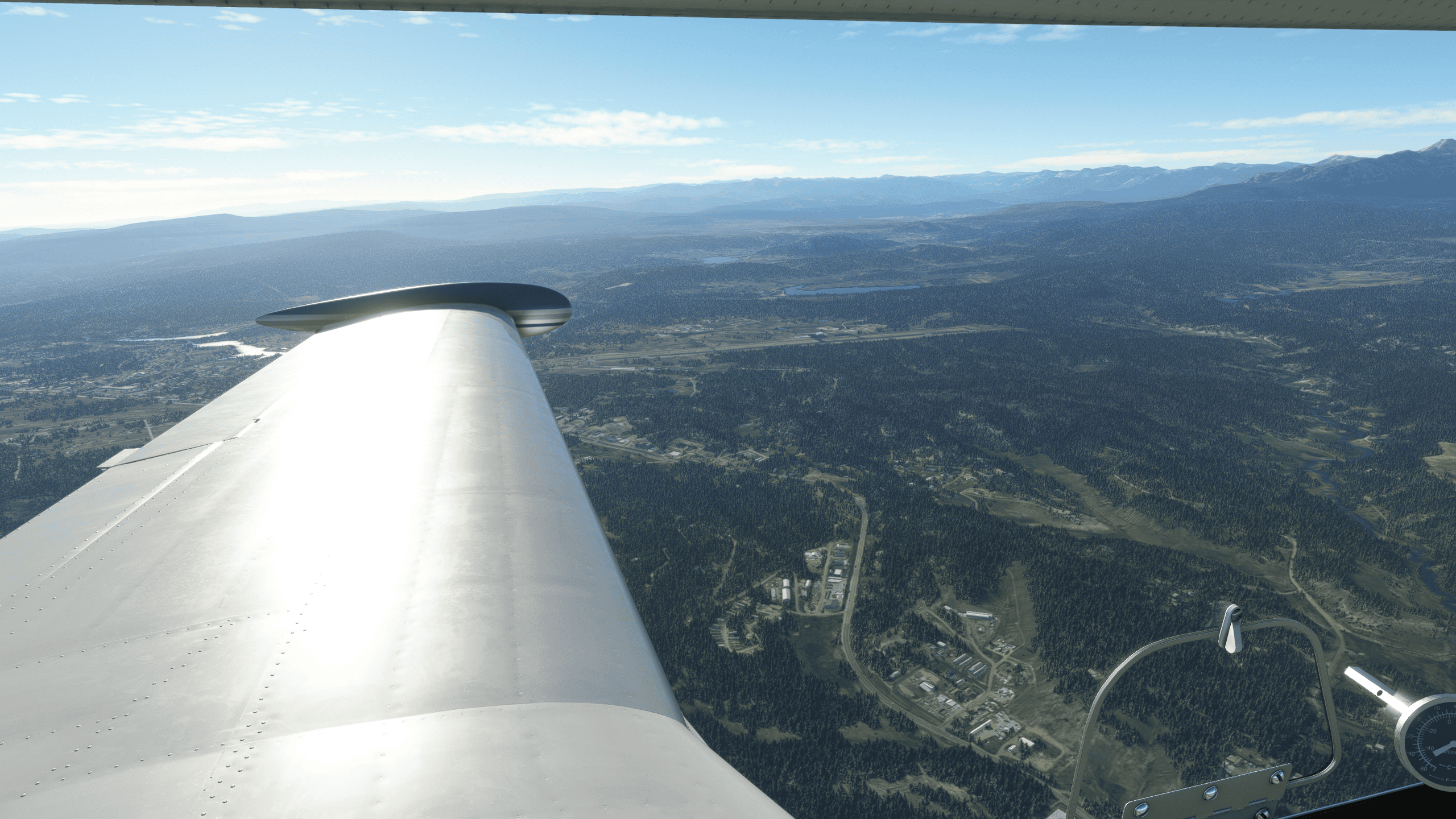
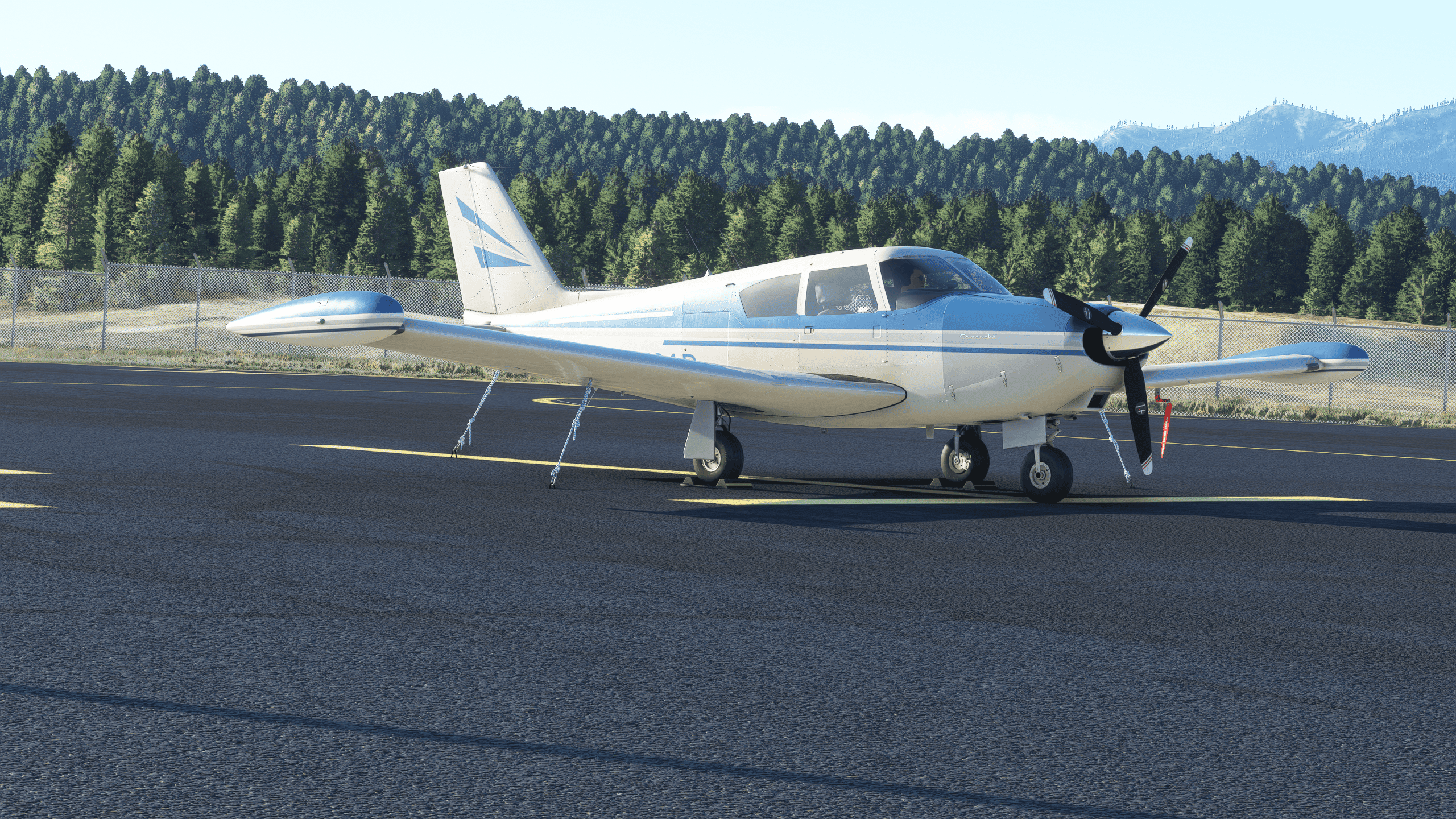
Then it was time for the final leg before writing the review, which was supposed to be an uneventful trip to Meadow Lake Airport in Colorado Springs. Little did I know there was a massive storm waiting for me and a friend as we approached the city from Silver Cliff, with thick clouds everywhere and nightfall rapidly approaching. Then It occurred to me I had only been flying under perfect weather in California and Nevada, with nil clouds. How would It handle the harshness of a big storm?

Although not recommended, flying into the stormy clouds was a necessary evil for scientific purposes. The result was precisely what one would expect: the low temperature made the engine gradually freeze, with the manifold pressure rapidly dropping and the cruise speed plummeting as I panicked for a second before remembering I only had to turn the carburetor heat on. It didn't take five seconds before everything was good again, much to my relief. Crashing would have been very awkward.

After eleven hours, twenty-five minutes, 1283 nautical miles, and eight destinations, it was finally time to write this up. It was enough flight time under my belt to come to a conclusion regarding the quality of this product. I arrived at the same conclusion during the first hour but wanted to ensure. With aviation and product reviews, you are better safe than sorry.
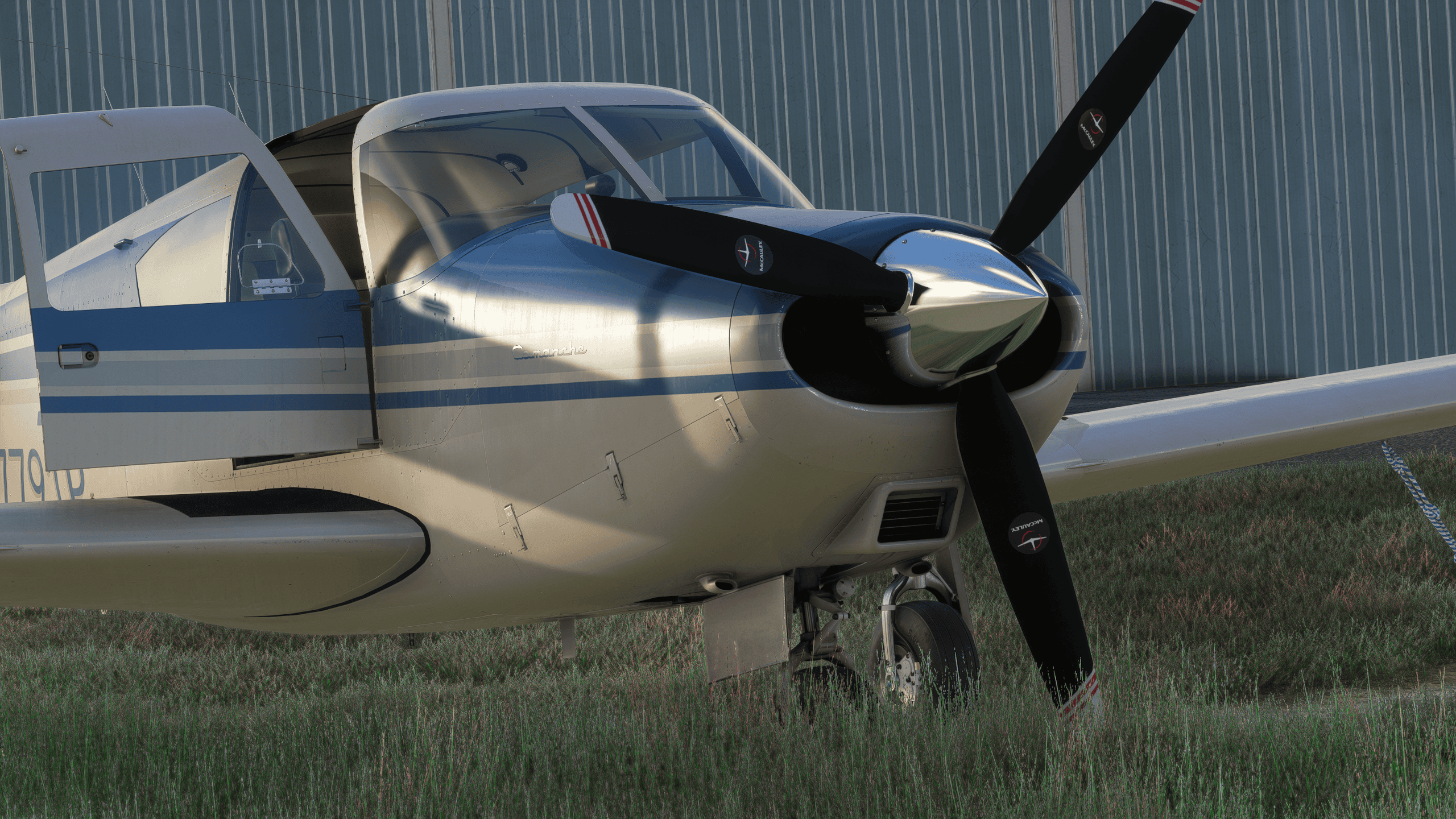
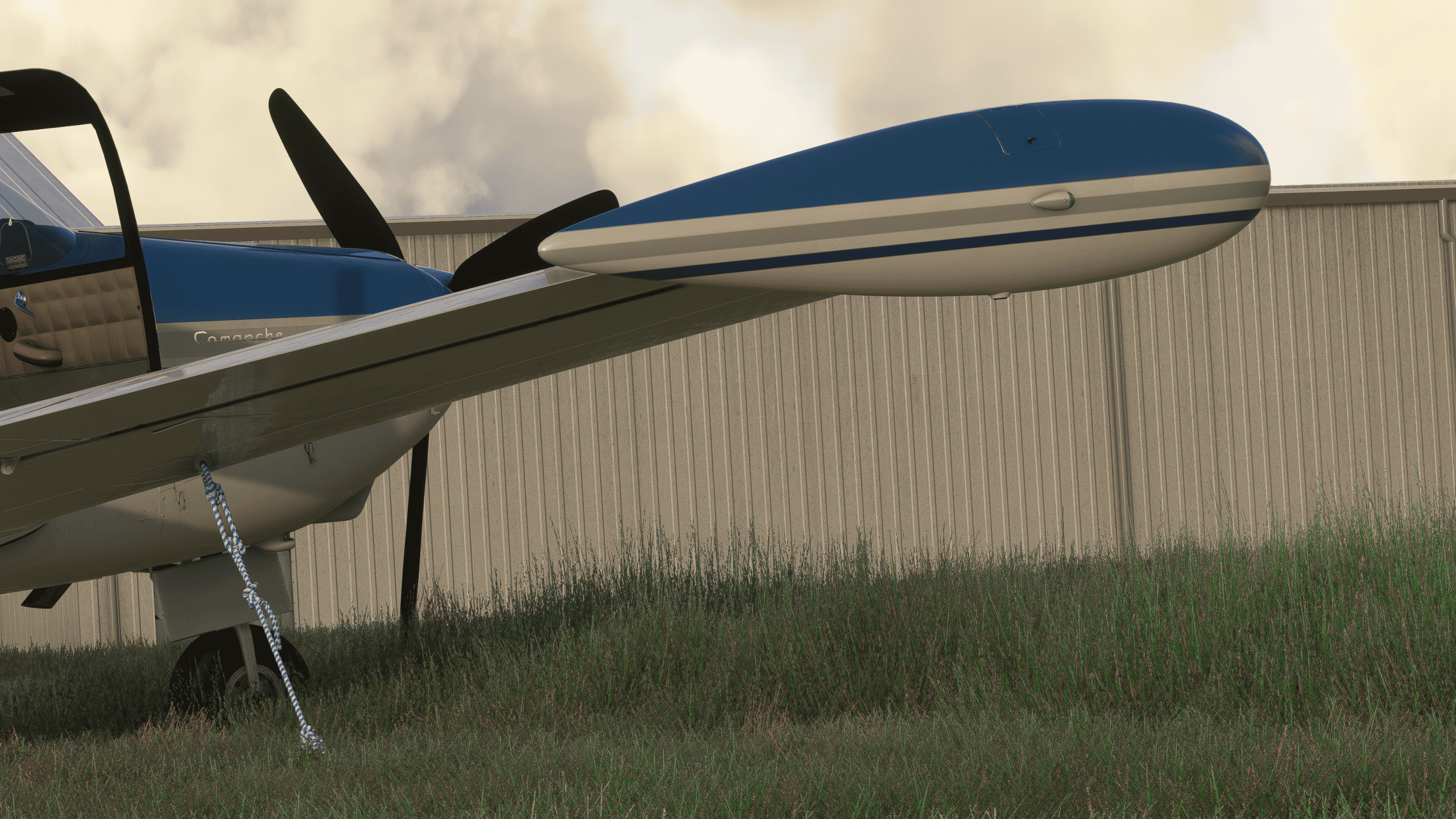
Visuals
The A2A Comanche is visually stunning, internally and externally, going to depths rarely seen in Microsoft Flight Simulator to conform with their interactive walkaround feature. You can, for example, take the fuel lid off and look into the tank, check the oil level, wiggle the control surfaces, and so on. It's an unmatched level of interaction that takes things to a whole new league. More on that later.
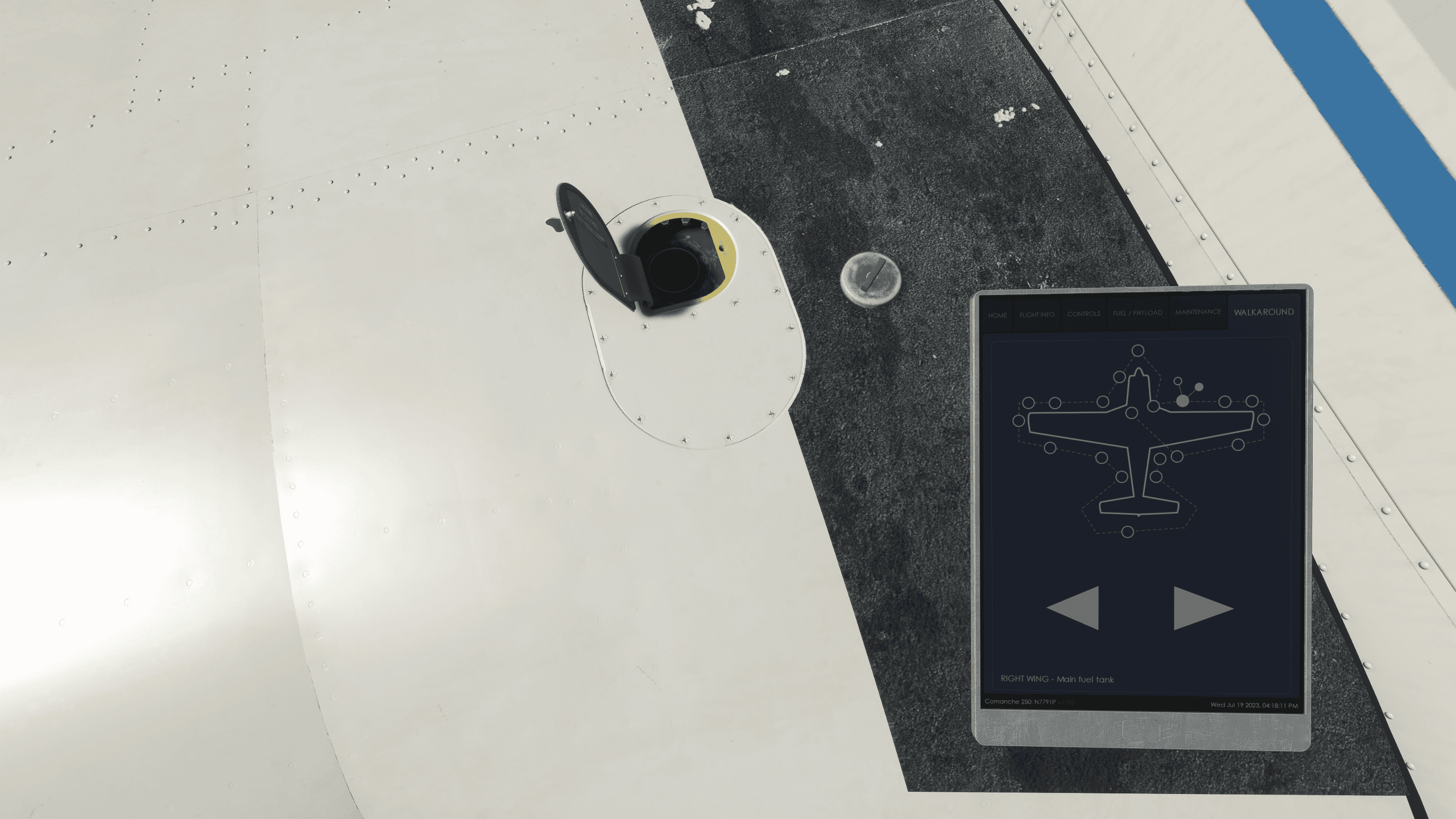
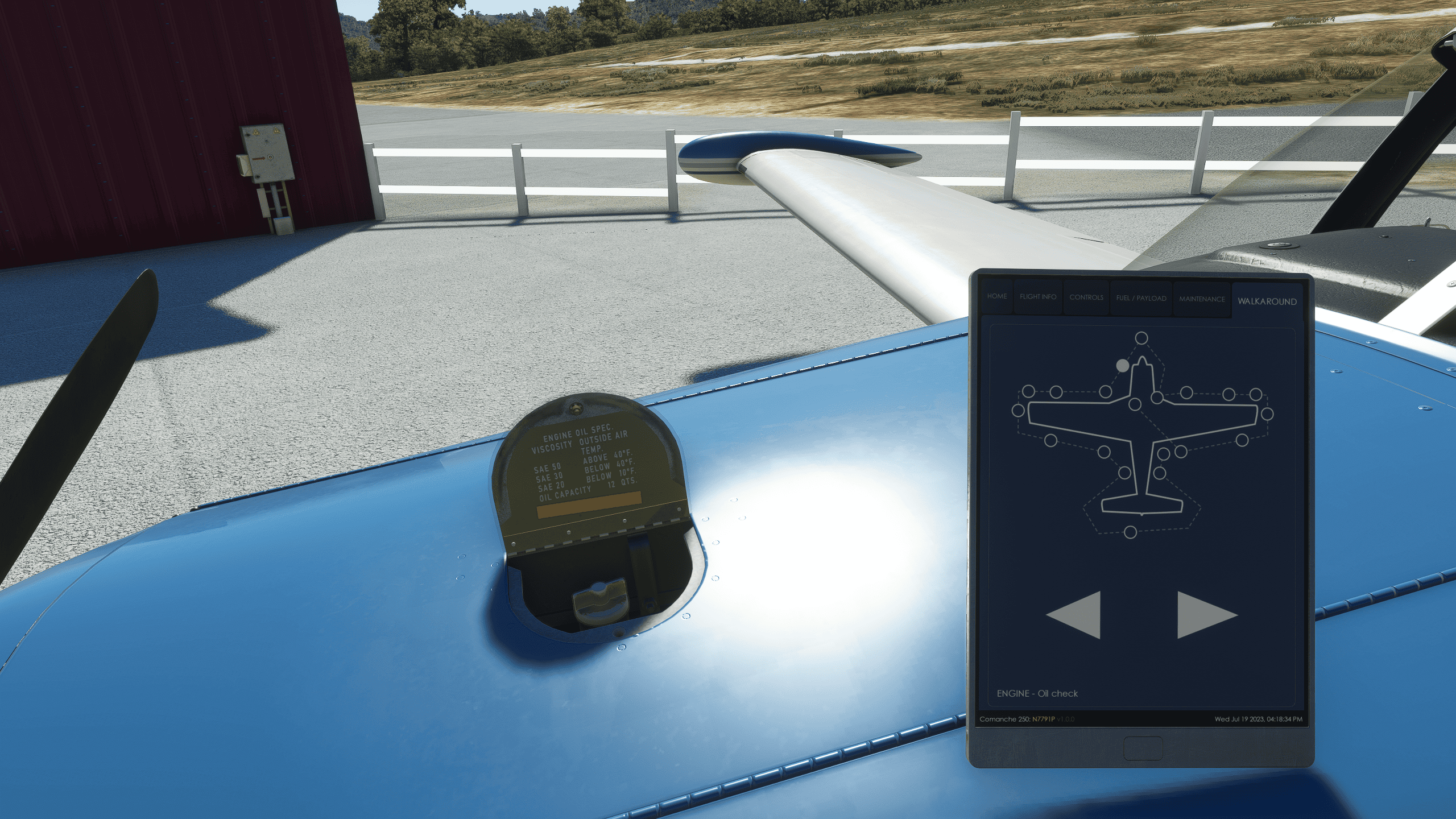
The texture work is just as good, with many variations on a per-livery basis, with different interior configurations, different seat fabric, and so on, making every airframe rather unique, as if the per-airframe persistence and dynamic wear and tear were not enough already.

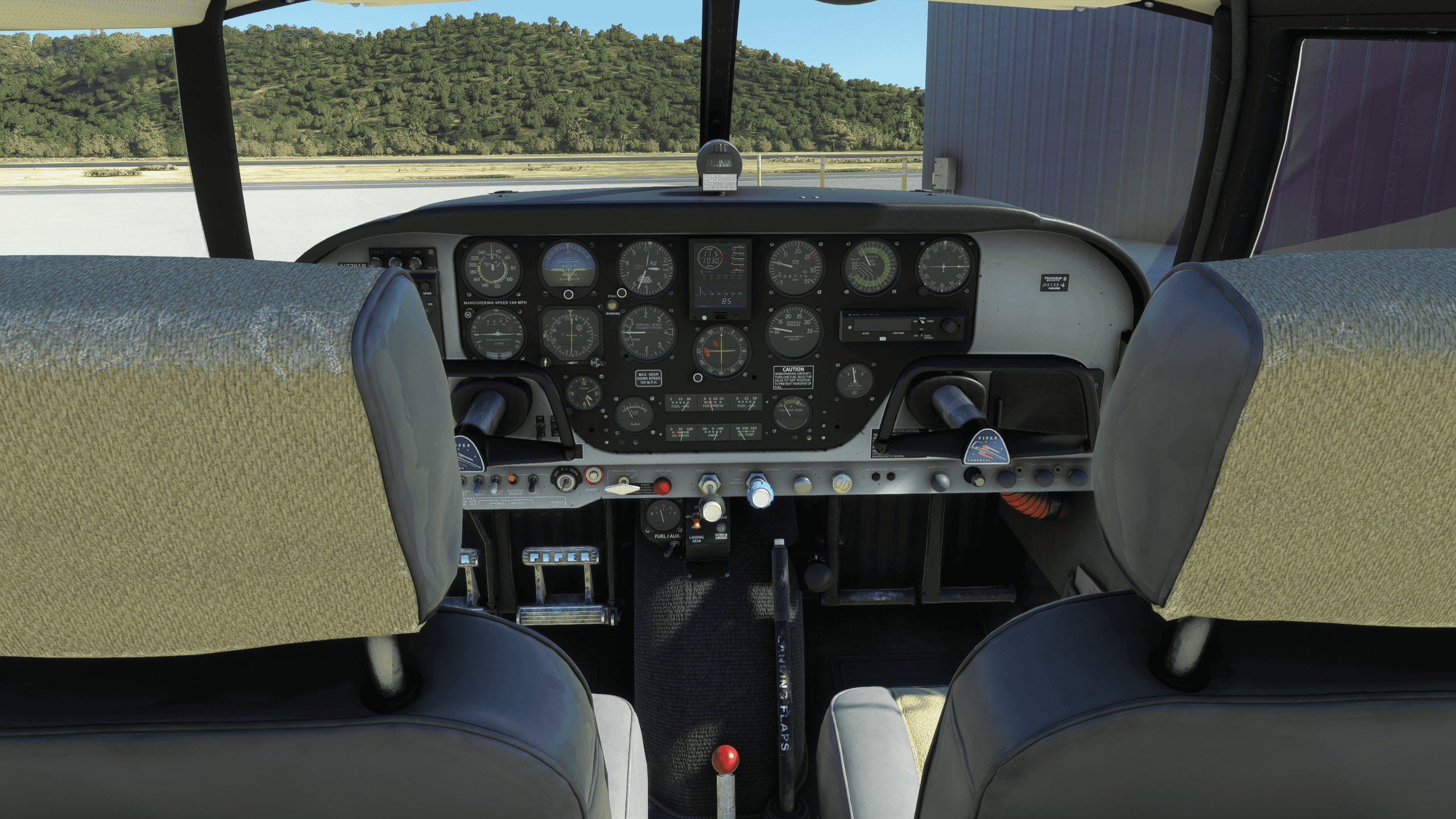
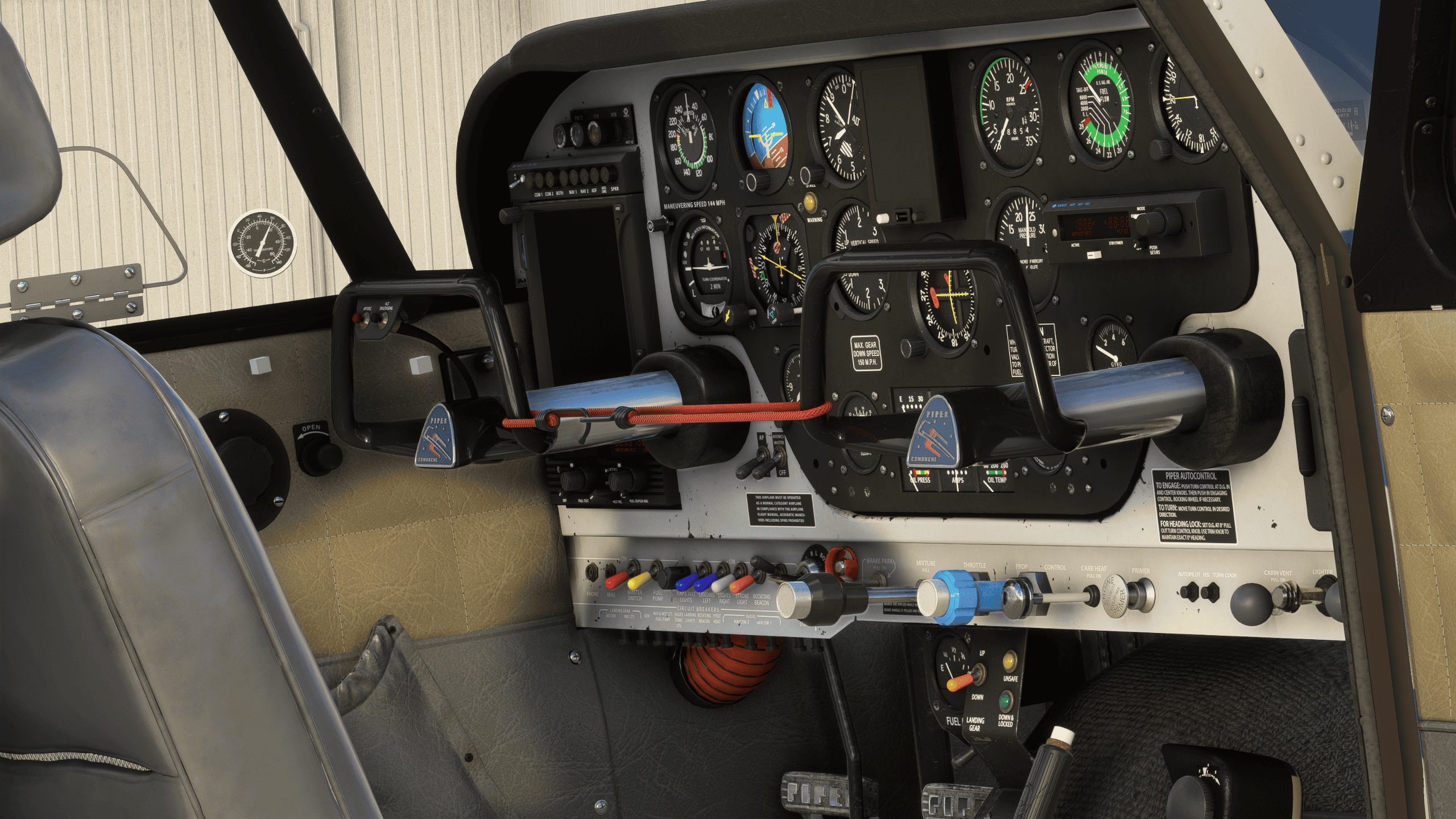

The weathering respects the fact it is an airplane that has not been in production for nearly fifty years now, meaning it won't be entirely pristine around the cockpit, but certainly well taken care of. It's an airframe that has aged like fine wine.
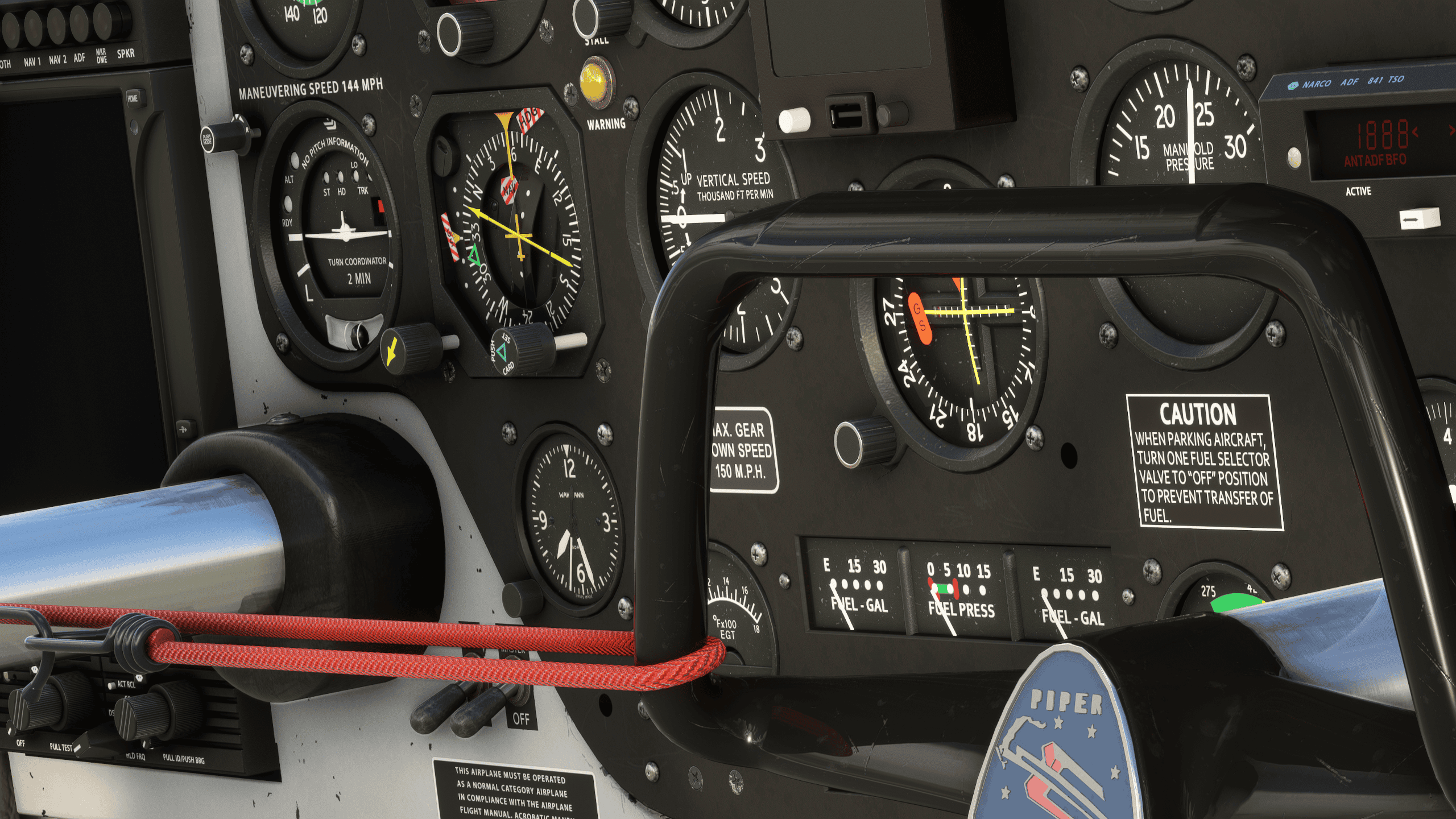
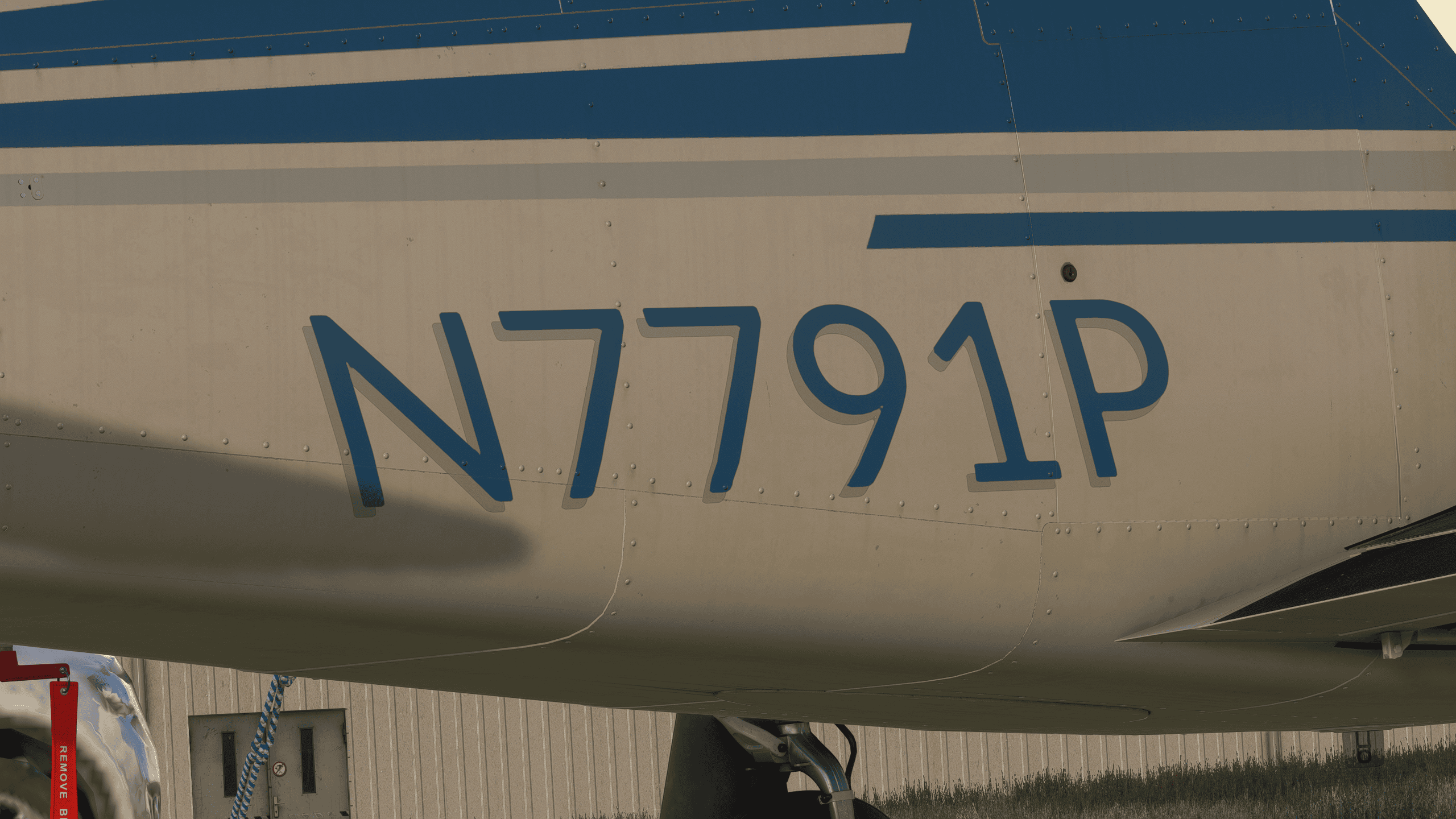
The community will surely release many modifications in the future with more or less weathering and many different color combinations, adding even more variety to the mix.
Systems
In true A2A fashion, the systems are very realistic, be it the custom-coded Narco avionics stack, the Century NSD-360A HSI, the S-TEC System 30 Autopilot, or the JPI EDM 830 engine monitor, all reproduced so convincingly the developers point us to their real-life manuals for further information on their operation. How cool is that? As by the book as it can get.
The JPI EDM 830 Engine Monitor constantly checks critical engine parameters, allowing the pilot to properly monitor the engine status despite not being the primary engine instrument. It also features a mode where it can find the correct cylinder's peak EGT to set your mixture, providing great fuel economy during the flight if done correctly.
The S-TEC System 30 Autopilot is rate-based. It does not use the airplane's attitude indicator or any of its sensors to steer the aircraft, but the gyro and an altitude pressure sensor for the altitude hold. That makes them significantly cheaper to install and less likely to fail, working independently of the ADI and HSI. With it being more affordable and simpler, there are some downsides, like its inability to hold pitch or intercept courses on its own, demanding a bit of babysitting. From my experience with it, though, which was extensive during my journeys, it treated me nicely with no surprise disconnections or anything despite being turbulence sensitive.
GPS-wise, we have a lot of choices: the default (or Working Title) GNS 430W and 530W, the PMS GTN 750, or the TDS GTN 750Xi. I went with the PMS GTN 750 because I love large touchscreens. The integration is seamless with every GPS variation.

If GPSes are not your cup of tea, you can go full-on old-school with a complete radio stack. Oh, the joy of variety.
Flight and Handling Characteristics
The flight characteristics respect the real-world performance tables, allowing the user to fly it by the book and yield similar results to what one would get in real life. It goes above just raw performance but also fuel burn, closely matching real-world figures (a friend used Foreflight predictions for it, and the numbers were bang on. I, unfortunately, don't have access to the app, so I can't do that myself).
As briefly mentioned during the first impressions section of the review, the handling characteristics feel very convincing. I am not a pilot, so I can't tell if it's accurate. Still, I have many friends with real-world piloting experience, some specifically on Comanches, and the feedback was positive. They seem to praise the landing behavior above anything.
The general "feel" is unlike anything else, obvious enough even to non-pilots like me. It doesn't feel on rails or wobbly, and there's a dynamism to it that is very hard to put into words. It feels right. They have been working on Accu-Sim 2.0 for three years now to provide a very convincing flight behavior, and it's easy to say they have achieved it. It certainly does not feel like Microsoft Flight Simulator at all.
The way it reacts to turbulence is unlike anything else I have ever experienced in the simulator, especially when flying over mountainous terrain. Microsoft Flight Simulator's terrain allows for very realistic turbulence simulation, given the geography of the area can interfere with the winds as it would in real life, but only a few aircraft take advantage of it. You can feel the challenge of flying close to mountains with the Comanche.
Landing with a moderate crosswind, which hardly makes me break a sweat with airliners, was quite the effort, thanks to the advanced flight model, making me struggle to maintain speed while also trying to remain centered and trimmed.
The ground behavior is unlike anything else I have seen in recent years, with nice friction and lots of wobbling during taxi, as expected with this kind of airplane. That same realism can also be unforgiving when landing, as the aircraft might try to veer off if you don't keep the nose wheel on the ground after touchdown. The sweet unforgiveness of realism!
Sound
The sound environment is entirely physics-driven and deeply tied to the other very advanced mechanics of the product, like the engine simulation, making it so you can hear every individual cylinder at work. How cool is that? Depending on how you treat the engine, the soundscape you get will vary greatly, just like in real life.
But an airplane soundscape is only partially made of engine sounds. The tires, airframe, hinges, seats, gauges, and windows all contribute to the often deafening result that we grew to appreciate. Fortunately, that bit is also nicely done, creating a conjuncture of noises that sounds melodic to the ears of a virtual aviator. If it does not appease one's ears, A2A made sure to simulate headphones with a noise-canceling feature (it also does so very realistically).
I like it loud, and no noise-canceling headphones were worn through 95% of my journey from Sacramento to Colorado Springs. I got to hear the engine scream during the stress testing of the auction parts, heard it grow quieter and quieter when flying through the clouds in Colorado, heard the airframe crack during some of my terrible landings, and also heard the gentle contact of the landing gear with the runway during my occasional butters. It all felt very natural.
A2A has excelled at sounds since the early days of FS2004 and FSX, setting an industry standard from which people expect no less. Their Comanche is no different, with many sound samples recorded and then dynamically played depending on what Accu-Sim 2.0 deems accurate.
If you watched the FSExpo video, you are probably aware of how much care and attention was applied to the sound recordings, with them going as far as dragging their 250 through a grassy field with a Land Cruiser to capture accurate ground sounds without the engine noise interfering with the quality. How many developers would go to that extent?
The switches, buttons, latches, and handles were recorded individually, providing a very accurate audible experience.
Lighting
The lighting makes the PBR texturing shine. The wing views are always stunning because of that. The landing lights illuminate the clouds like a Star Wars lightsaber, which is extremely cool.

Cockpit-wise, there are two flood lights, one for each seat row, a red light, and a C4-A multi-purpose cockpit light. They do their job very well, and it does not obstruct the visibility much.
User Experience
The Comanche is very user-friendly, with an easy-to-use tablet containing most of the pertinent information for carrying out a flight (checklists, limitations, and so on) and providing full control over the airframe without the need to reload the simulator, allowing you to switch panel options on the go, add or remove the wingtip tanks or stabilator tips, switch the propeller (either a McCauley or an MT), control payload, fuel. It also provides complete control over the maintenance system. One can even watch a real-time animation of the engine when it's on and monitor its core temperatures, giving an incredible insight into how a piston engine operates.

The tablet also displays useful information like the barometric pressure, wind orientation, and cabin temperature with live feedback on whether it's dropping or increasing (quite helpful).

With a single click on the home button, the tablet goes straight into the little pouch on the door, allowing you only to have the tablet in your sight if you wish. It's the aircraft's "menu on steroids" where you can control and monitor everything, yet being easily put away.
It's also where one can summon the realistic walkaround feature, briefly mentioned at the beginning, where you can ensure everything is working properly before taking off: flaps, fuel, ailerons, stabilator, wing, landing lights, etc. It stands out from most walkarounds because it's fully interactive, allowing you to open the fuel tanks, check the oil level, and test the fuel, just as you would in real life.
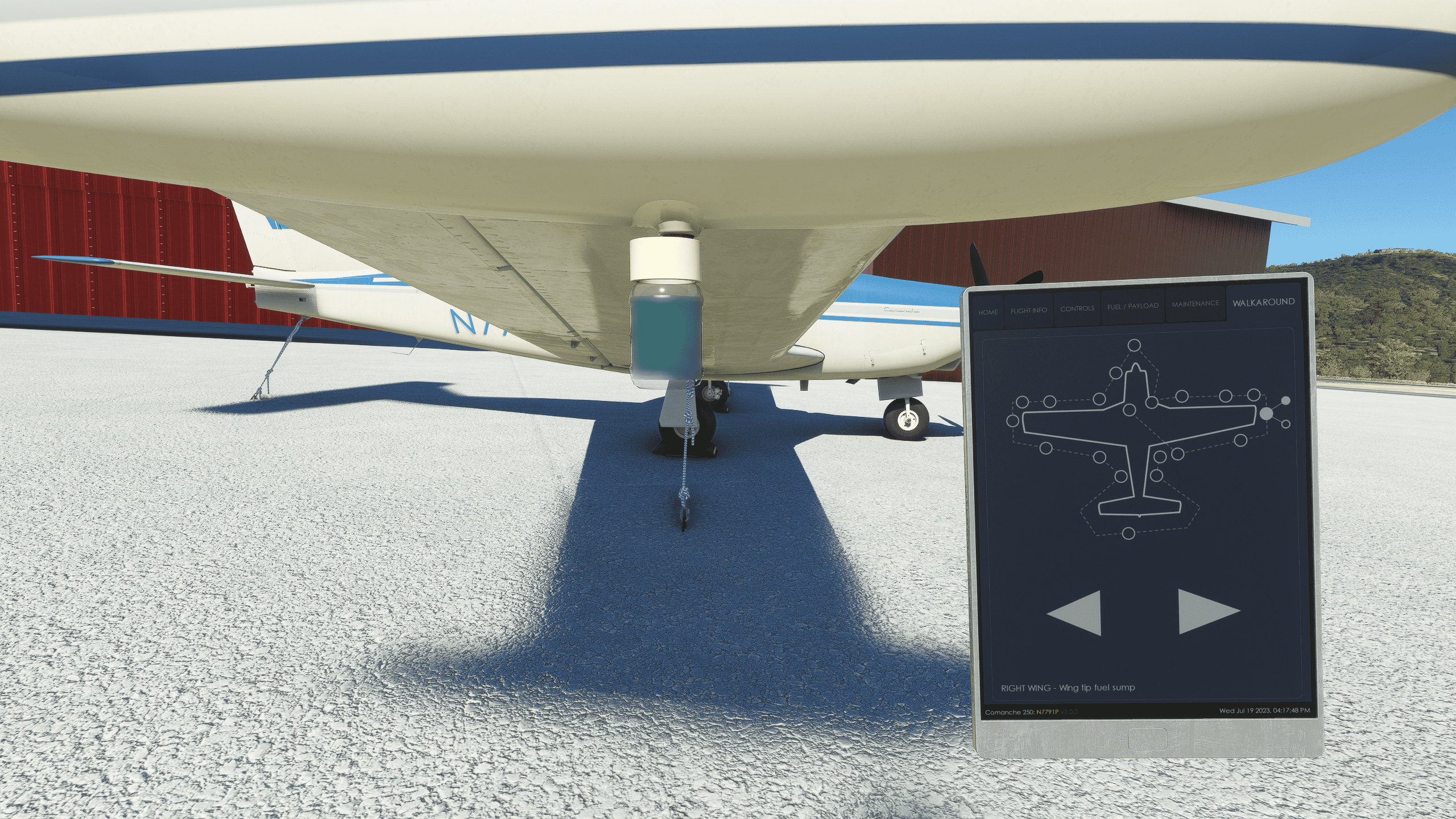
The pdf manual provided with the product is very in-depth. It brings valuable information about the aircraft's operation and its many distinct features and a collection of performance data tables for cross-referencing.
Performance
Despite its complexity and advanced features, it performs in line with most default GA aircraft, meaning there's almost no performance penalty despite offering a vastly superior flight experience.
On my system (32 GB RAM, Ryzen 7 3700X, Nvidia RTX 3080 10 GB), there were no performance issues at all, with my framerate remaining stable through all the flights, except during my leg to Agua Dulce because the autogen thought it would be funny to spawn hundreds of wind turbines. Then again, it's not the aircraft's fault at all.
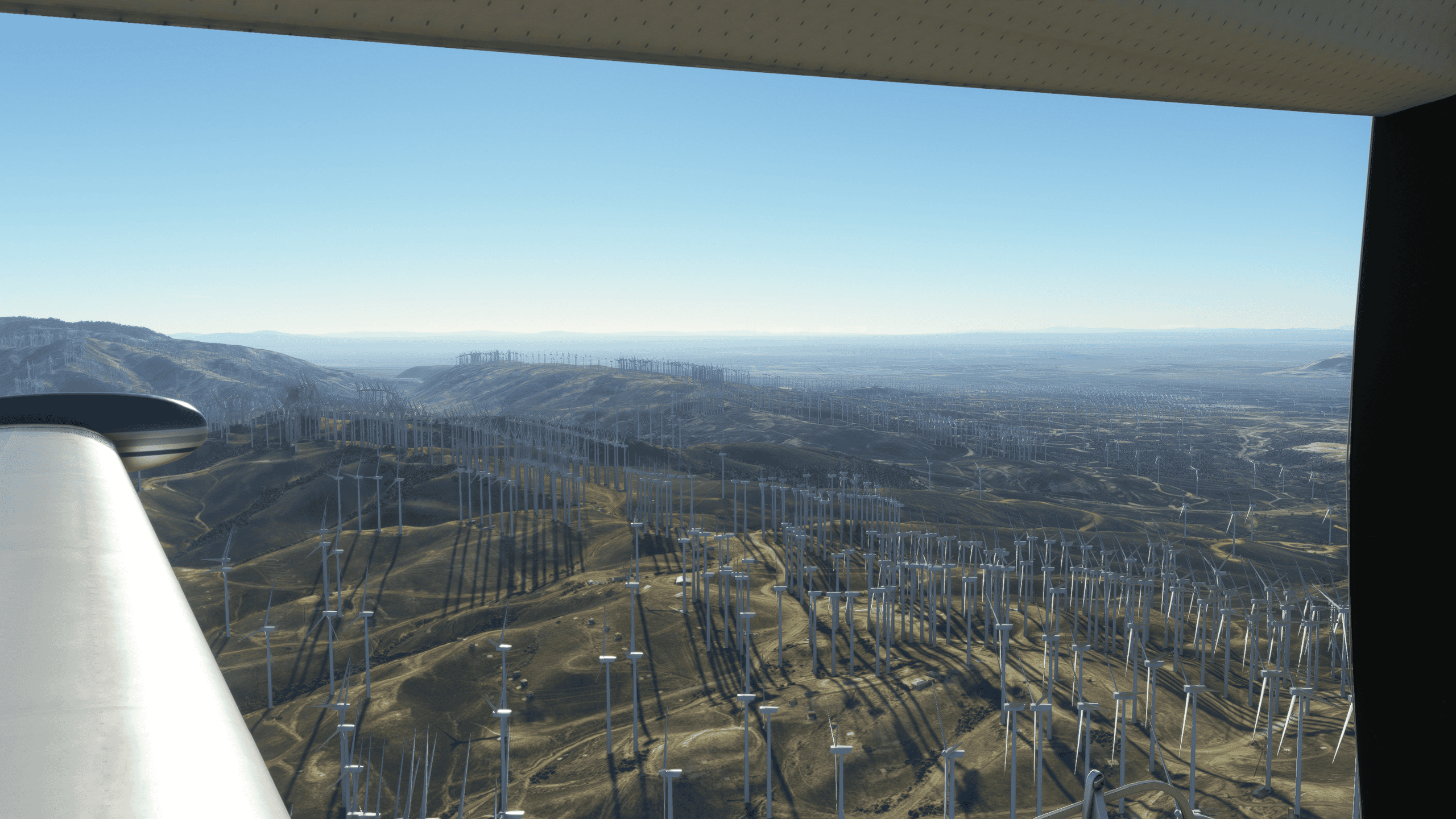
Judging by the GPU load (which was not high), I can safely say it's not GPU heavy at all, making it a very performance-friendly airplane regardless of system specifications, as long as one can run Microsoft Flight Simulator and its default aircraft without significant dips, of course.
Conclusion
The Comanche 250 easily takes the crown of the best general aviation airplane for Microsoft Flight Simulator yet, with many features that were never seen before (in MSFS). Where it has been seen before (FSX and P3D), A2A pioneered it.
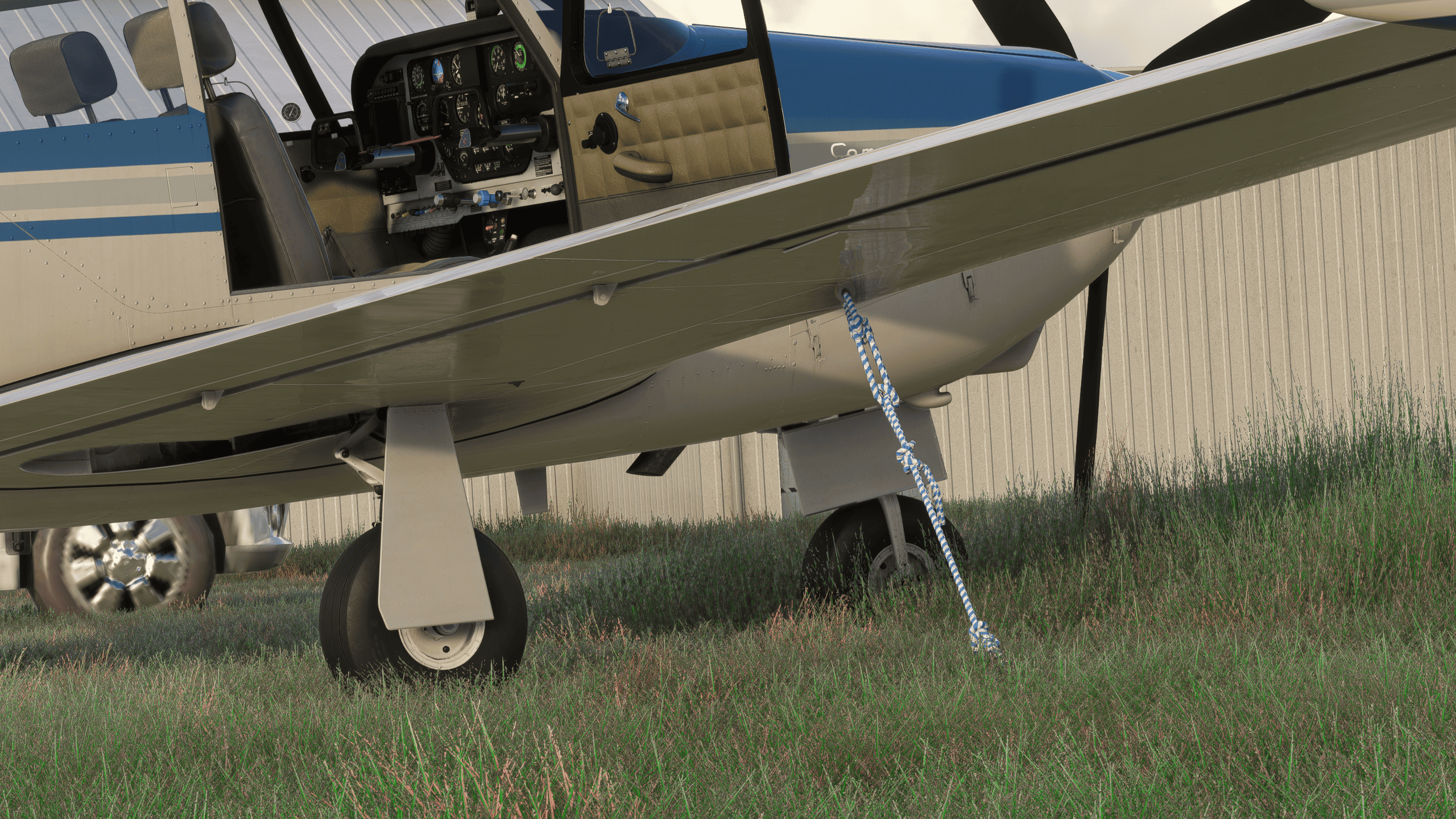
The old Accu-Sim for FSX and P3D was already outstanding and brought joy to thousands of flight simmers around the globe. The new, scratch-built, Accu-Sim 2.0 takes things to an entirely new level of interactiveness that felt like a distant dream until a couple of days ago when the Comanche was released.
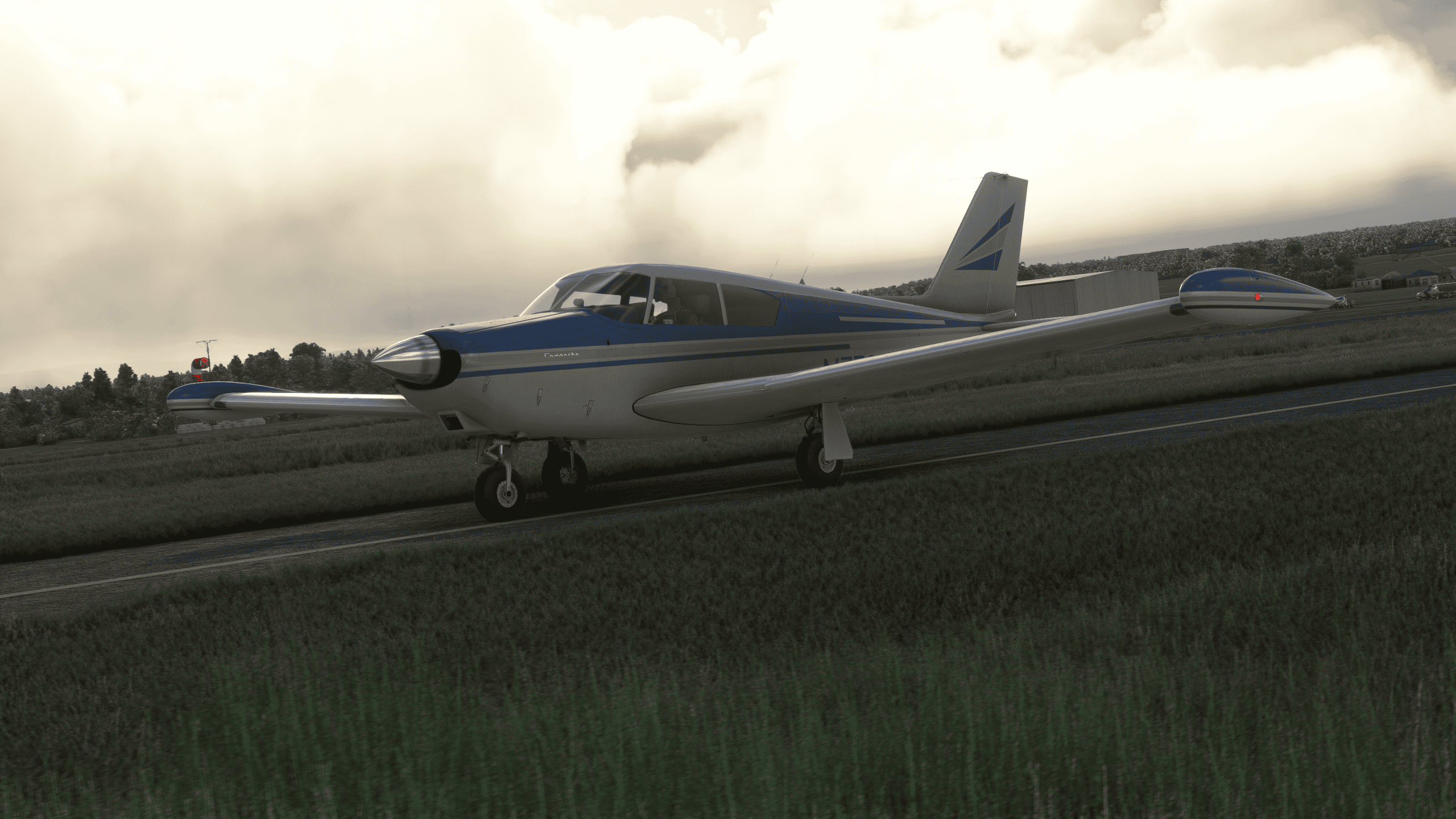
Their persistence system makes it so a livery is not just a livery but an airplane you own and care for. Actions have long-term or short-term consequences depending on the severity, and you always have to think twice before doing anything that isn't within safe operational margins.
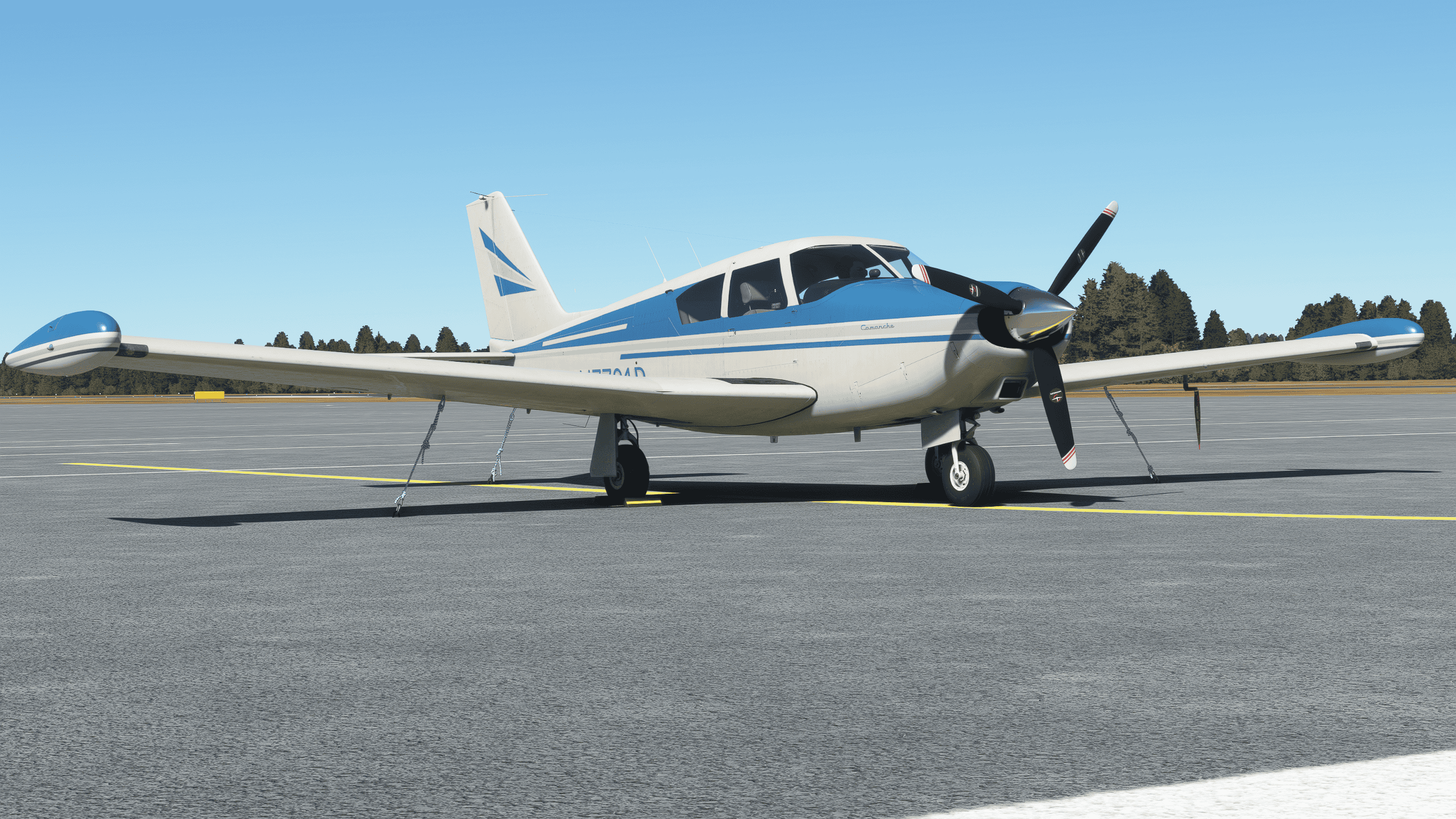
That "ownership" factor creates a bond with the airframe that is rare to get elsewhere, making it somewhat easier to find a reason to start a world tour or that huge cross-country journey you have always dreamed of. There's a greater sense of purpose when the parts are consistently wearing out, and consequences might happen, but not through the wonders of scripting, but as a direct result of using something often enough, either properly or improperly. Things wear out, after all.
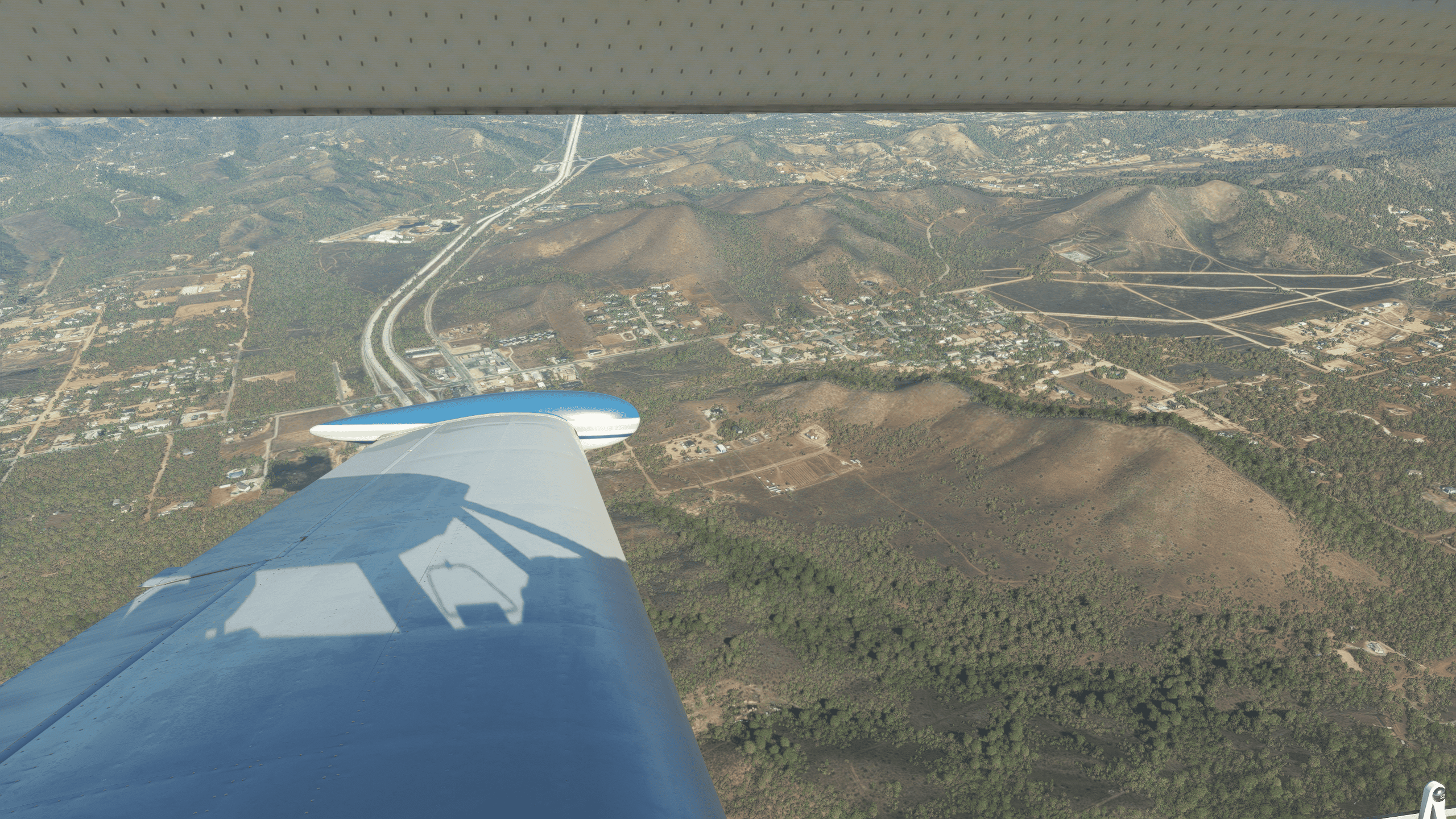
I have always wanted to start a long journey, but it never felt right with other planes because that greater sense of ownership is not there. For example, with other games, like Euro Truck Simulator 2, an odometer will keep track of your driving distance, and your truck will eventually require maintenance even if you drive perfectly. While some aircraft add-ons keep track of the hours flown, it's rare for them to take airframe persistence into account and have you perform checks now and then, aside from third-party tools that offer that externally, like FSEconomy and their 100-hour checks.
It feels amazing to perform a walkaround and magneto check and know you are not wasting time because it might find a discrepancy and save you from an eventual accident. It's part of the greater sense of purpose that I mentioned before.
The A2A Comanche is a love letter to the art of owning an airplane and its many catches. It's not just about flight dynamics (which are very well reproduced) at the end of the day, but also about your battery running dry, your brake pads wearing out, your avgas getting water contamination, your tires running flat after so many landings, your flaps becoming looser and looser as the time comes after so many miles of virtual abuse, and so on.
It's the closest many people can get - myself included - to owning an airplane. I can only fantasize about it, and Accu-Sim 2.0 makes that fantasy much more believable. Now I own an aircraft, and the operating costs are nearly zero (aside from the power drain).
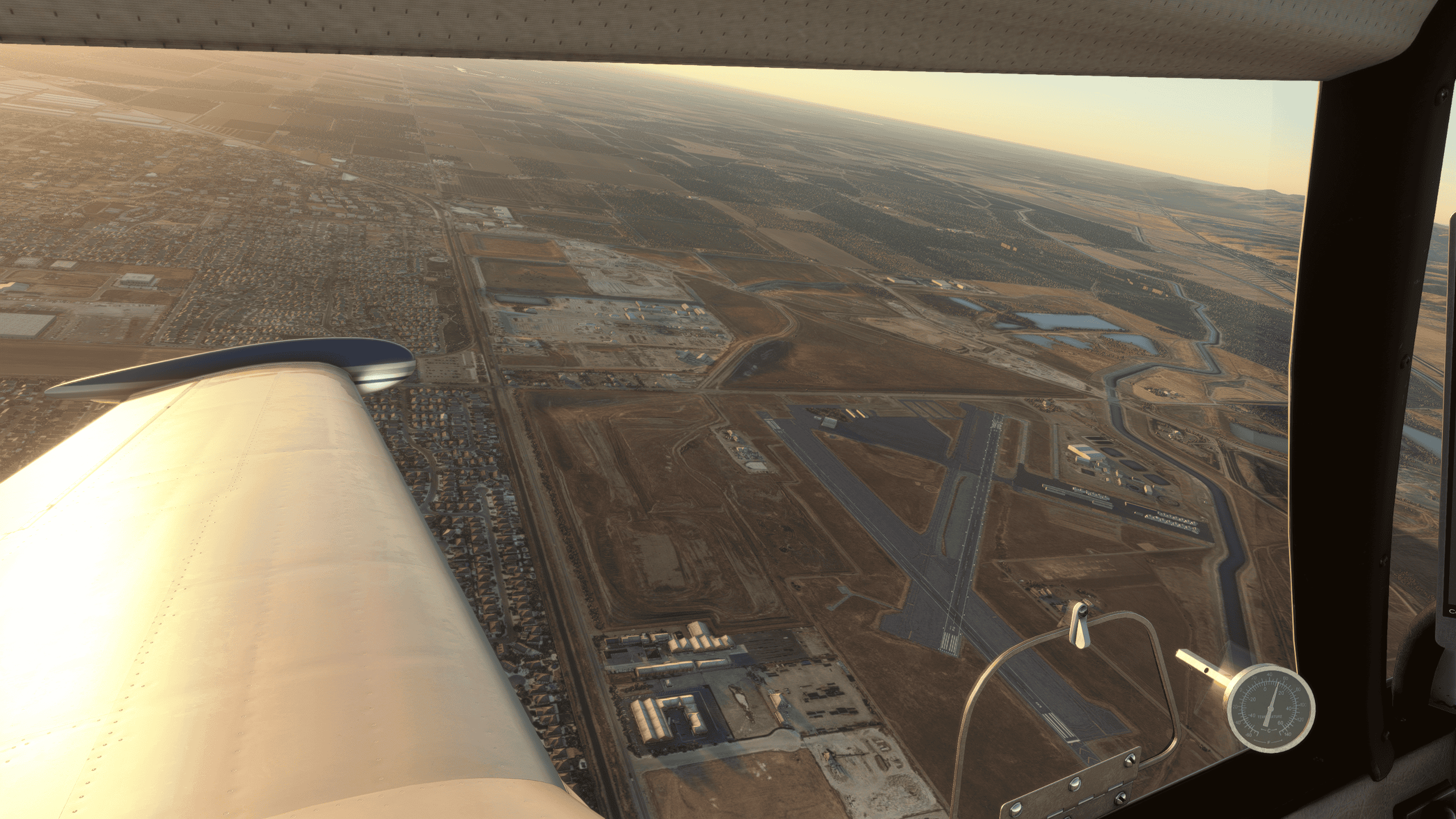
For $49.99, you can experience the joy of owning a Comanche 250 without the downside of having to pay for fuel, parts, or engine overhauls, only getting the enjoyable bit of flying it around anywhere, with the sky being the limit. I can not recommend it enough!
A huge thank you to A2A Simulations for providing a review copy!
Share this page
COMMENT ADVISORY:
Threshold encourages informed discussion and debate - though this can only happen if all commenters remain civil when voicing their opinions.




